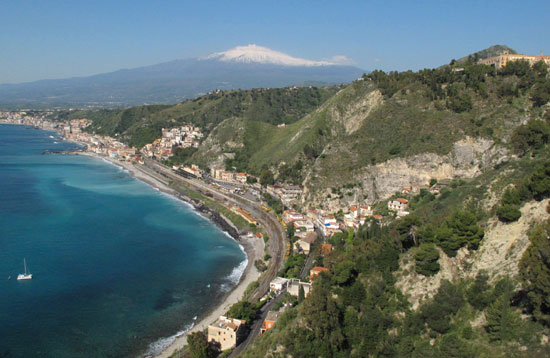
by Maureen | May 10, 2011 | Discoveries, Incredible Locations, Journal, Photos, Sicily, South Italy Tour, Taormina
Along the eastern shore of the large island of Sicily, south of Messina, in view of Mt. Etna to the west, lies Taormina high above the shore of the Ionian Sea. It offers ancient Greek history and contemporary souvenir shopping. Mediaeval stone buildings and current luxuries. Whether one walks behind the tour groups along the heavily-trod Corso Umberto, or takes off into the hidden back walkways, Taormina covers the range. In this town, I found a different polish than in Cefalú, and certainly Palermo.

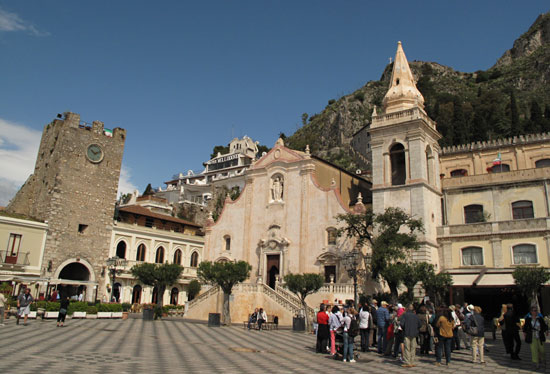
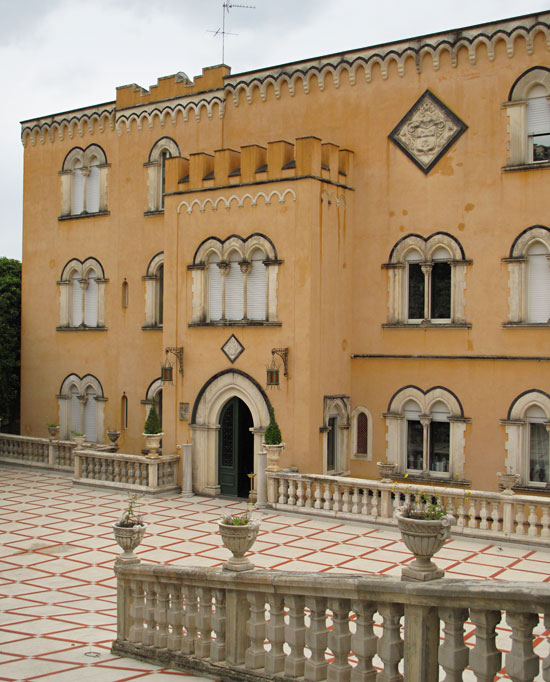
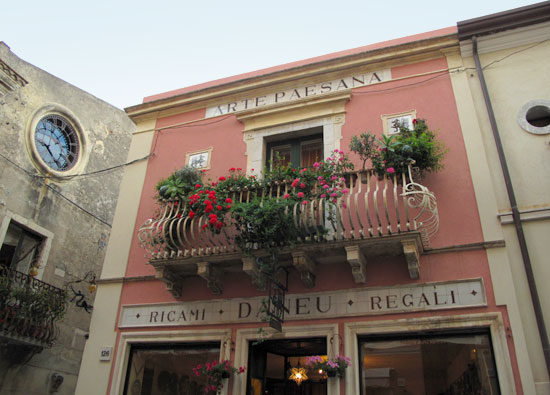
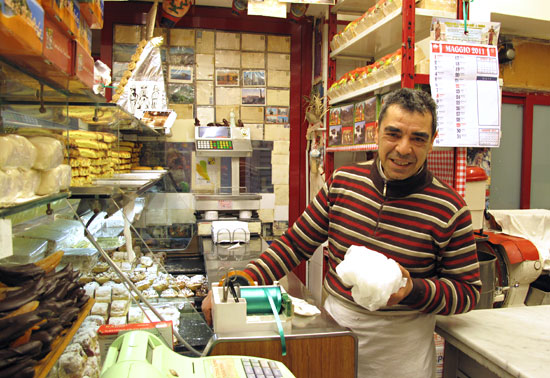
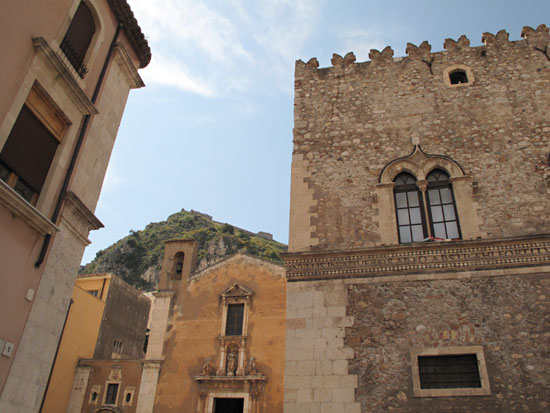
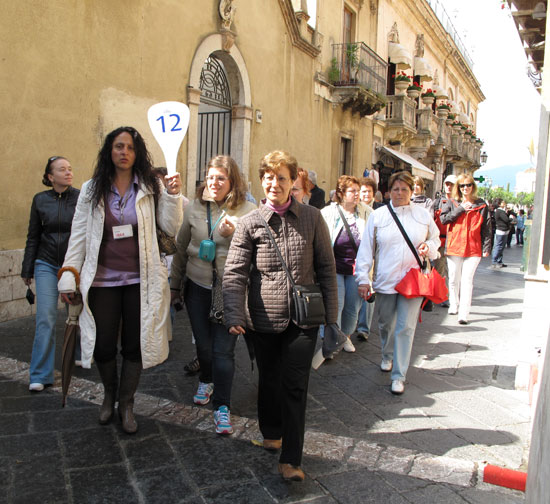
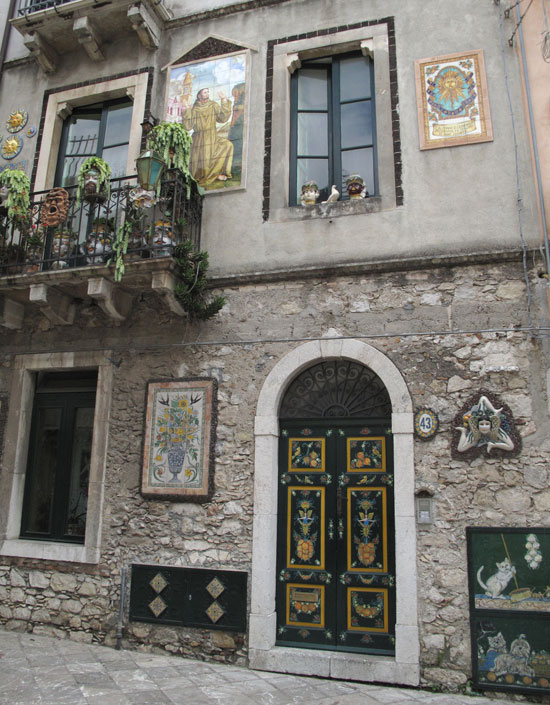
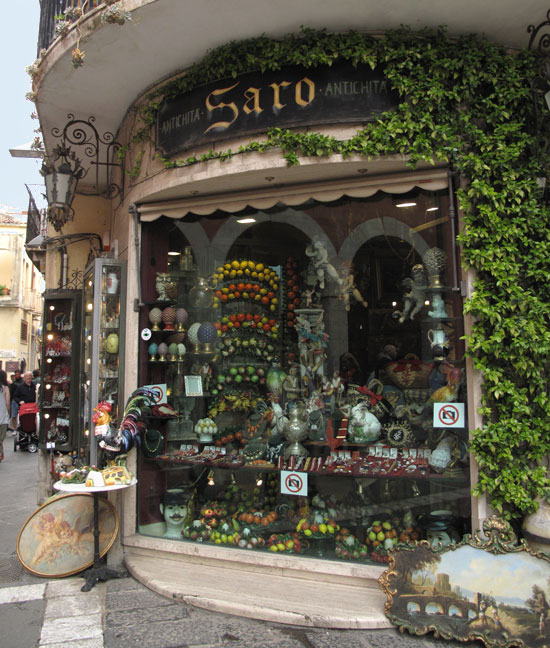
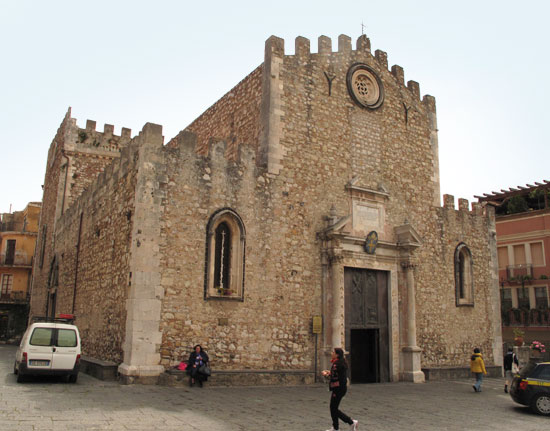
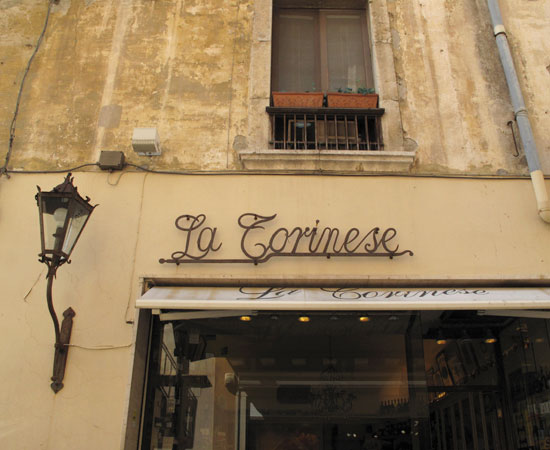
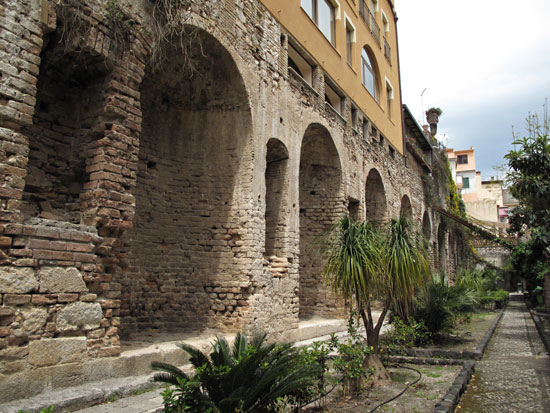
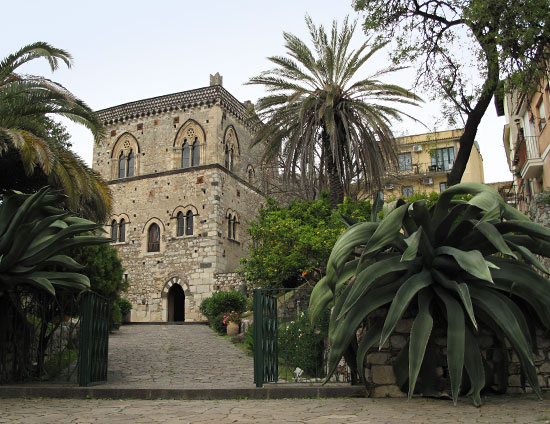
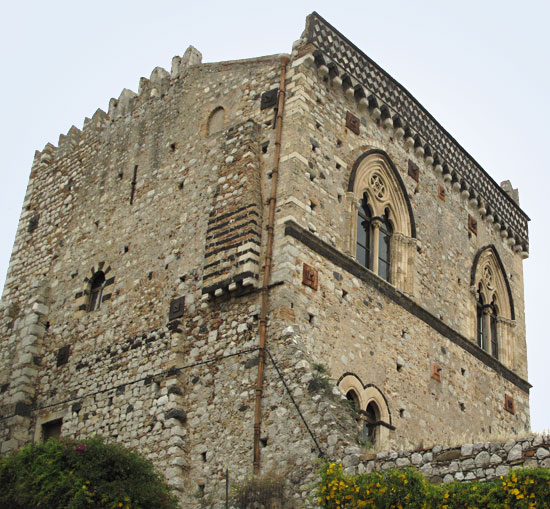
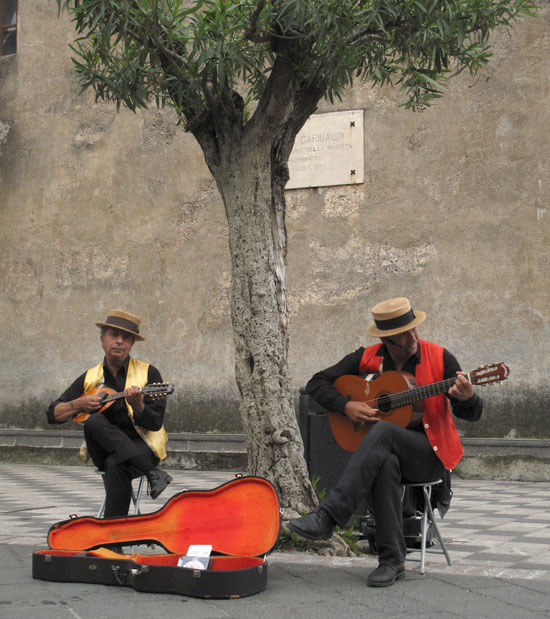
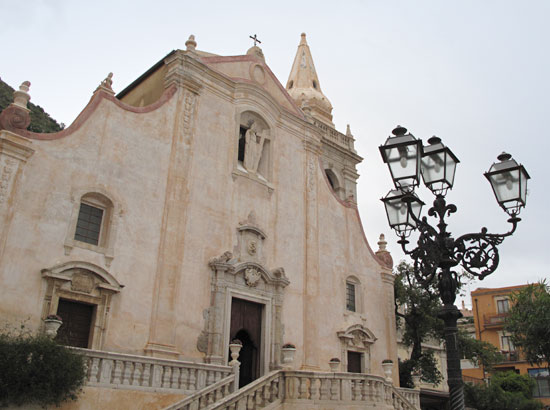
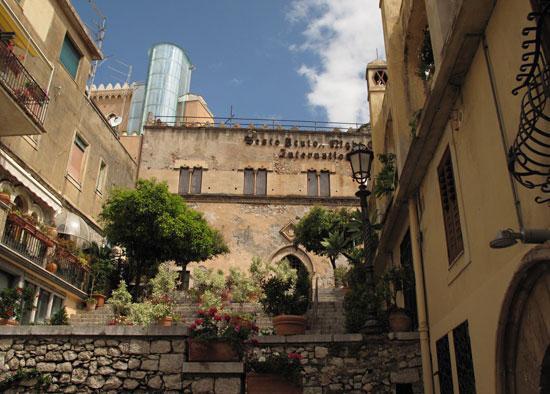
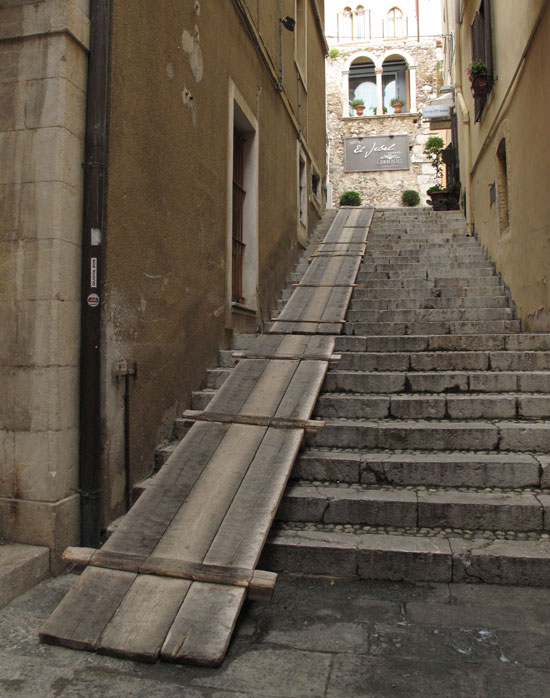
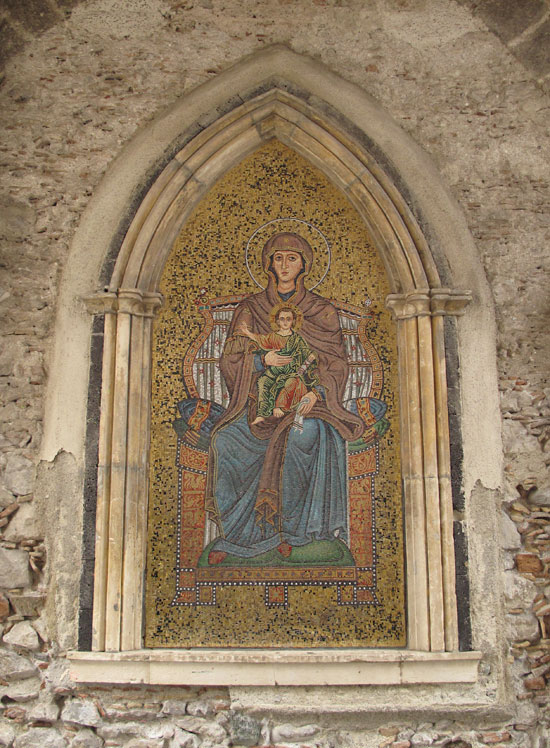
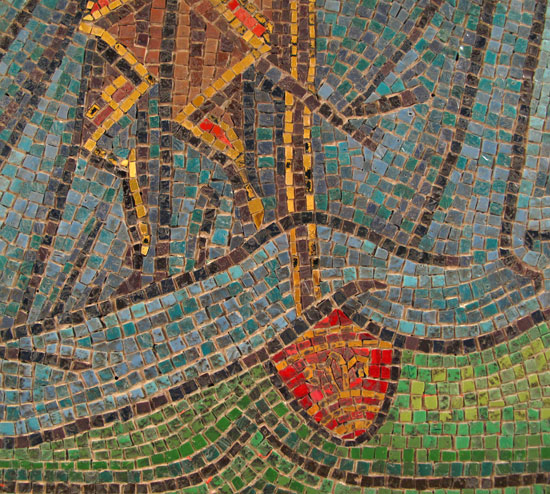
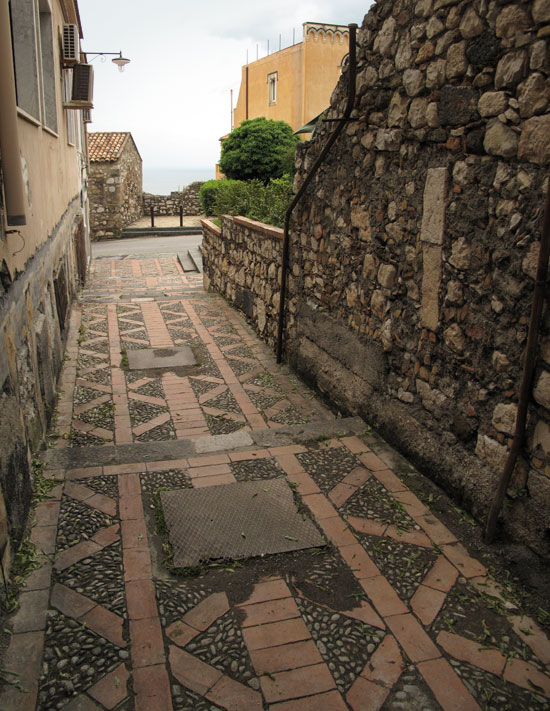
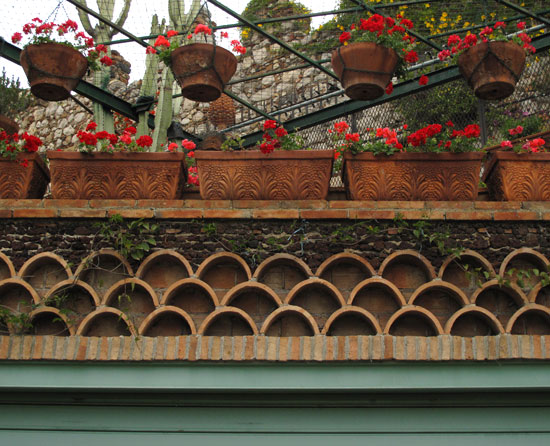
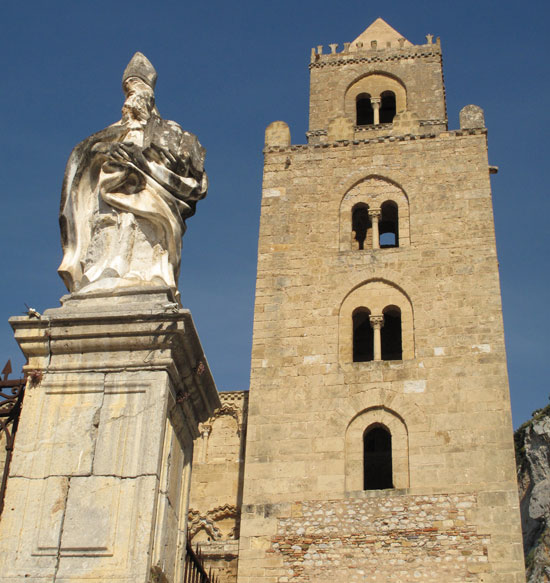
by Maureen | May 10, 2011 | Cefalù, Incredible Locations, Introspection, Journal, Quips, Sicily, South Italy Tour
8 May – In the “centro storico” – historic center – of this little seacoast town east of Palermo, on the north shore of the island of Sicily. The narrow, climbing, maze-like streets remind me of the towns of the Cinque Terre, rooted into the spaces at the bases of their hills. Navigation must come of childhood exploration. How could one possibly give directions home?
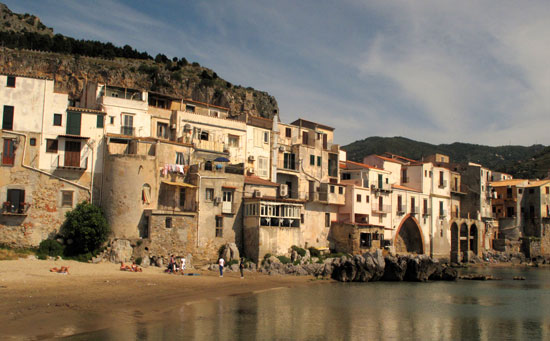
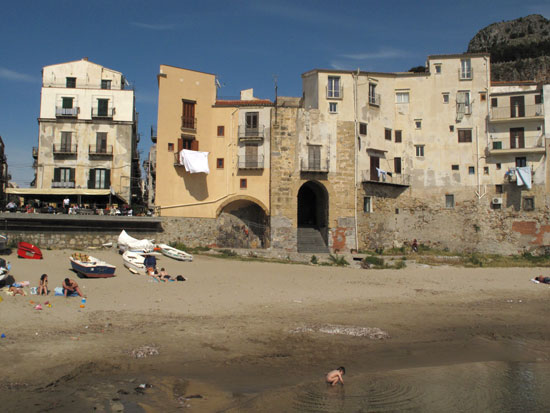
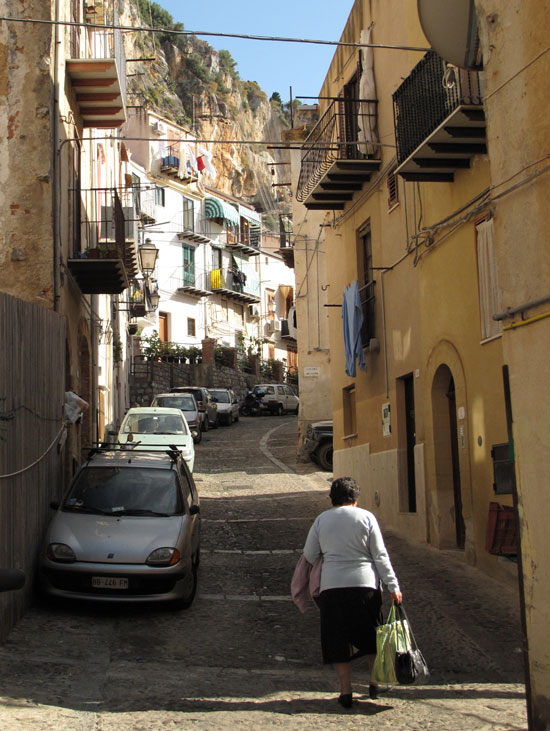
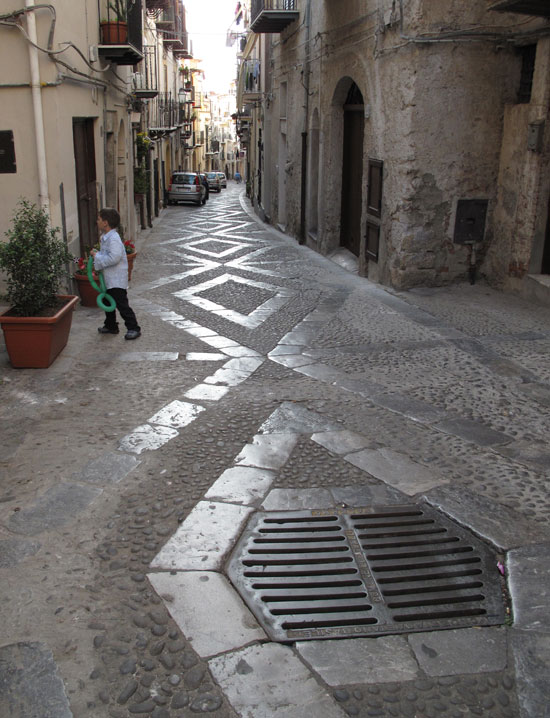
Cefalù is FULL of tourists: elderly Europeans speaking German, French, Danish… some Italian. They are here in crowds with cameras. How can I find myself bristle when I, too, am a tourist? But I want to get away from them and the shops selling knick-knacks, and see the atypical sight. I lose myself on the side streets. Go to the hill tops that require a healthful youth the elders lack. I take the “roads less traveled” and marvel that they never stray from the most-worn path. As in Venice, get off the main drag and find solitude and visual treasures.
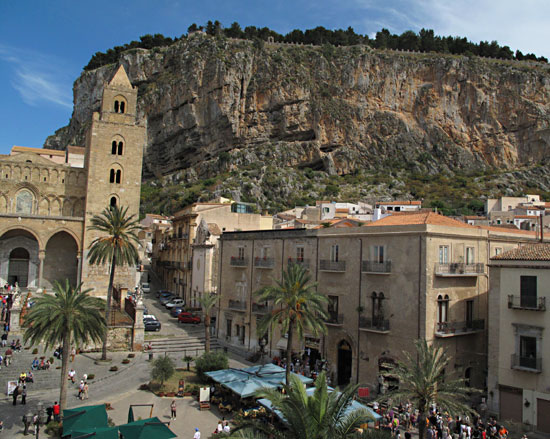

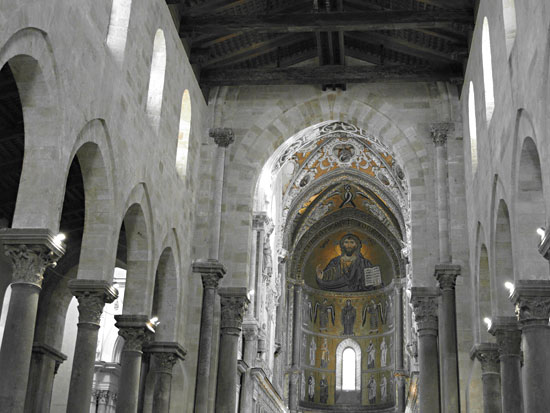
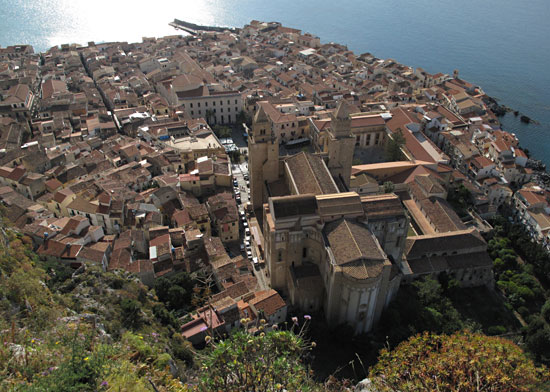
– – –
9 May – I had the absolute noisiest B&B room imaginable in Cefalù (Hotel Villelmi). Granted, I had a little balcony and access to a rooftop terrace that looked right out to the Piazza del Duomo and “La Rocca”. But the rowdy crowd of tourists and locals expressively chattered late into the night. Then, early in the morning, 4:00 or 5:00, workers used every sort of process or equipment to clean that piazza. Pressure-washers, mini street sweepers, manual laborers. And the recycling trucks came to pick up the 1000s of wine bottles emptied the day before. The bottle bins were right outside my window.
And as much as I like spring birdsong, I have never heard such loud and sleep-preventing birds as those this morning! And then, at 7:00, the duomo bells chimed 1, 2, 3, 4, 5, 6, 7, 8, 9, 10, 11, 12 times, 3 repetitions of this in rapid succession, as if to say “get up, get moving, get out now!”
Hmmm. Proximity to a Piazza del Duomo is not such a great idea.
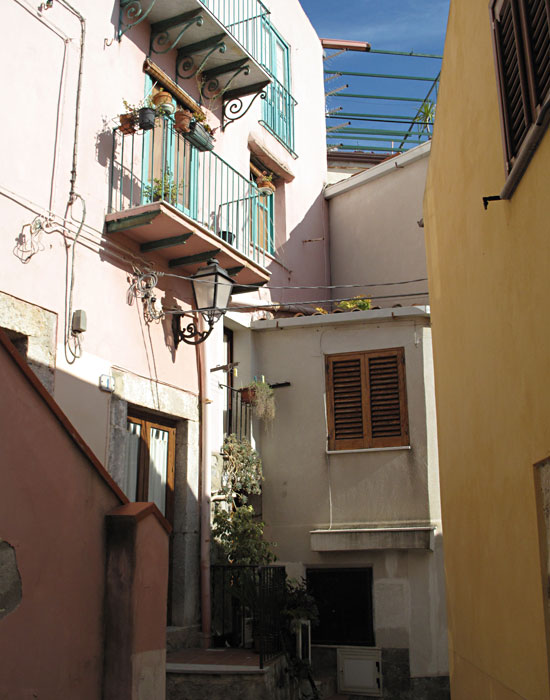
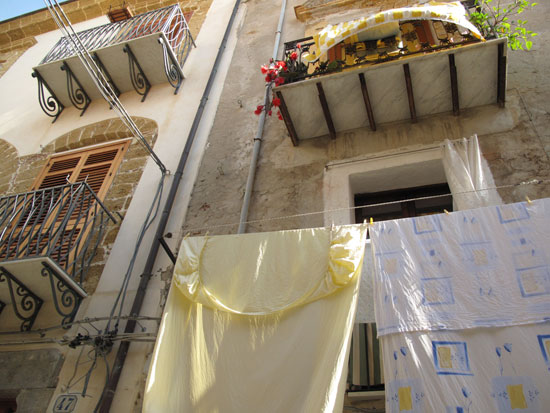
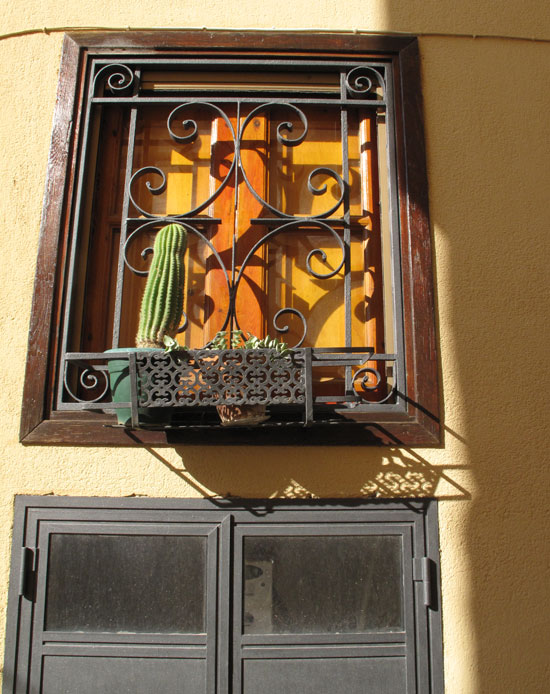
– – –
9 May – I’m traveling the regional train along the shoreline toward Taormina: “the straights of Messina” at my left! The straights are something I’ve always heard of, but I have no recollection of what I’ve heard. I’ll have to look them up.
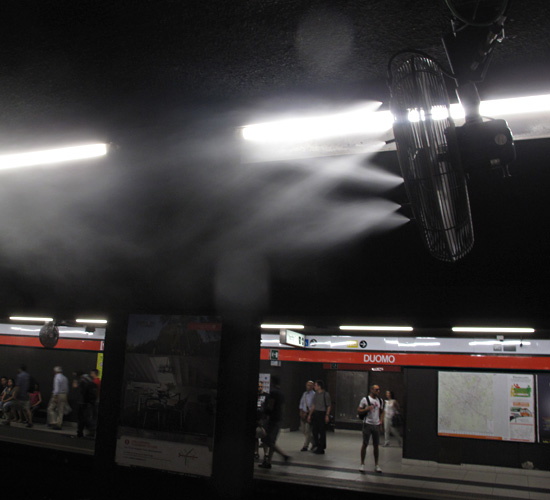
by Maureen | Jul 20, 2010 | Featured Articles, Journal, Photo of the Day, Photos, Quips
It’s been toasty-o here in Milano lately, with temperatures in the high 80s to high 90s, and humid. When I walk out of my apartment, it’s like walking into a sauna! I’m grateful to have air conditioning.
One solution I find at the major hub subway stations around town, is the installation of fans spewing a fine mist. It’s refreshingly cool…and mesmerizing.

.
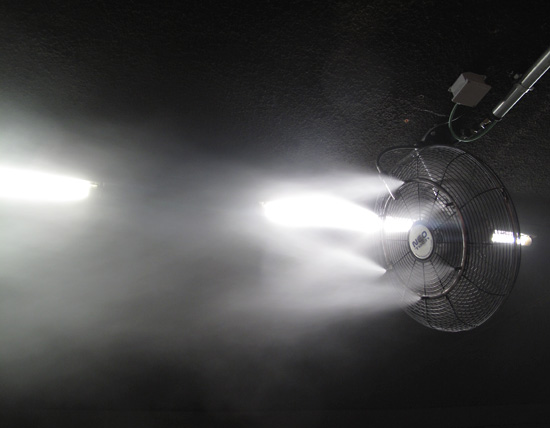
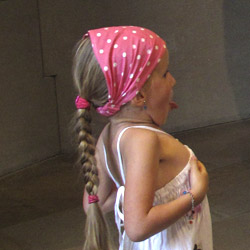
by Maureen | Jul 11, 2010 | Discoveries, Featured Articles, Journal, People, Photo of the Day, Photos, Quips
The little girl was unrestrained and so pleased with herself. She and I both saw the humor of her Minnie Mouse joining Michelangelo’s unfinished Rondanini Pietá. As I think about it further, I wonder which creator, Michelangelo or Disney, has had greater cultural influence? (Many would be aghast at my putting those two in the same sentence, but it’s a legitimate question.)
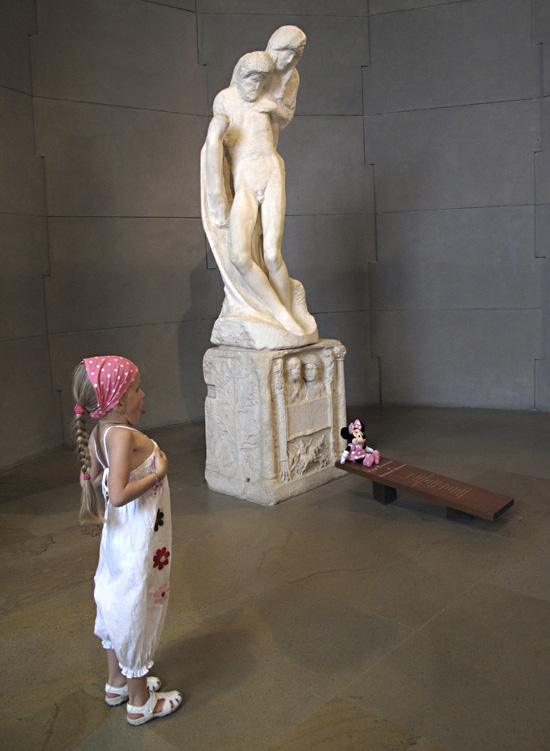
Though I’ve been in and around the Castello Sforzesco, one of the jewels of Milano, a number of times while here, I had not gone in to view the art and history exhibitions there. Before my departure, I wanted to “at least” see the Rondanini. Michelangelo had worked on this Pietá for many years and, they say, even up to a few days before his death in 1564. Here’s a video about the restoration done on the Rondanini Pietá (in Italian, but visually interesting, nonetheless, for those that don’t understand it).
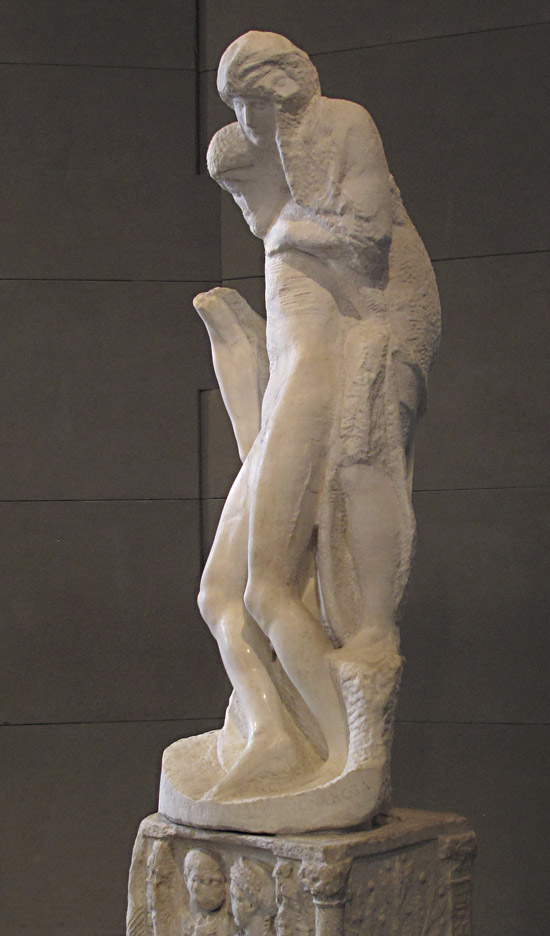

Leonardo da Vinci also left his mark in the city of Milano. He lived here for roughly 20 years and followed not only artistic pursuits, but also military and civil engineering efforts. (He designed water-flow “locks” on the Naviglio Pavese canal along which I ride my bike so frequently.) His world-renowned “Last Supper” is here in Milano at the monastery of Santa Maria della Grazie. Viewing tickets are sold months in advance, and the large salon hosting the wall mural has an atmosphere very carefully controlled to preserve what’s left of the dry fresco.
At the Castello, on the other hand, I readily walked in and bought a 3 Euro ticket to view the whole museum complex. I proceeded past stone remnants from centuries past.
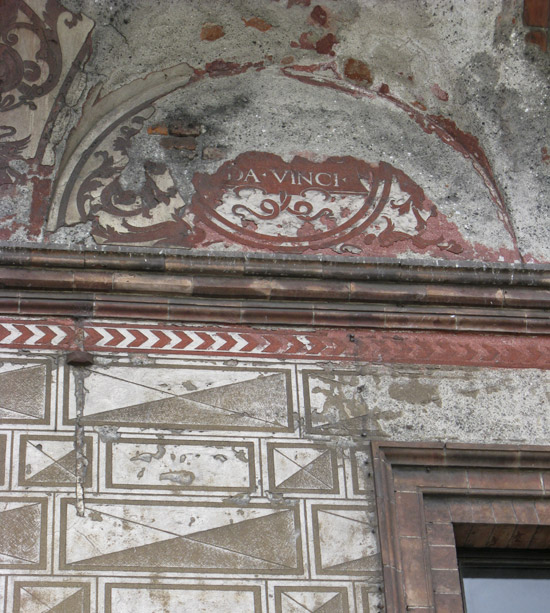
“Court of the Dukes Museum of Art”
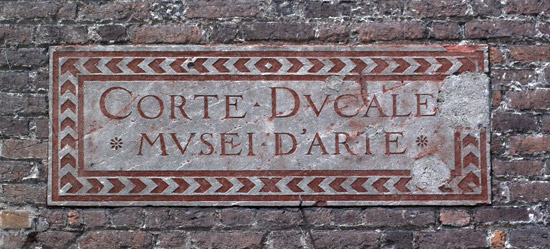
(This letter “P” is for my sister, by special request.)
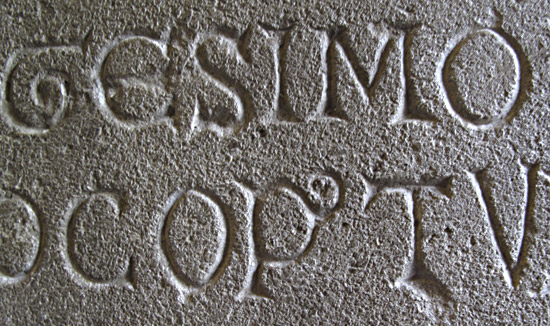
And I was amused by this type correction. (Ooops.)

I walked into grand rooms with elaborately painted ceilings and draped with tapestries, this one of St. Ambrogio, the patron saint of Milano.
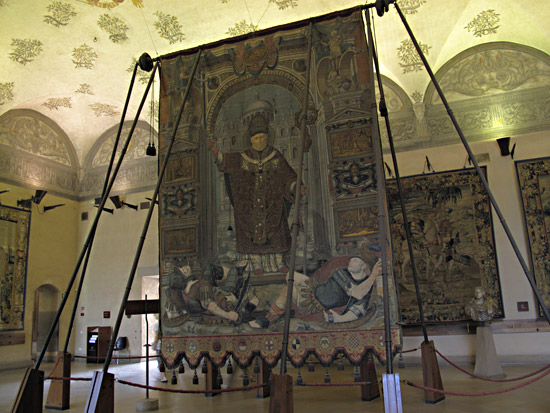
And then I walked into an entirely unexpected and very dark room. The “Sala delle Asse” was painted by Leonardo c. 1498 across the full expanse of its ceiling and down onto its walls. Quite unlike the iconic “Last Supper”, this canopy of foliage, trunks, stone and scrollwork creates a tangle of visual detail. At first glance it looks like a mess, as if the whole surface had been consumed by black mold over the years, with a few, still-vivid blue shields positioned at quarters.
The ceiling has an equally tangled history of “restorations”, including a complete whitewash covering, subsequent cleaning and color “enhancements”. The room was restored again in 1954, undoing the heavy-handed treatments it had suffered in centuries past.
It was a hard place to photograph, but you can find more images here. (Looking at some of them, I can’t believe we were looking at the same ceiling!)
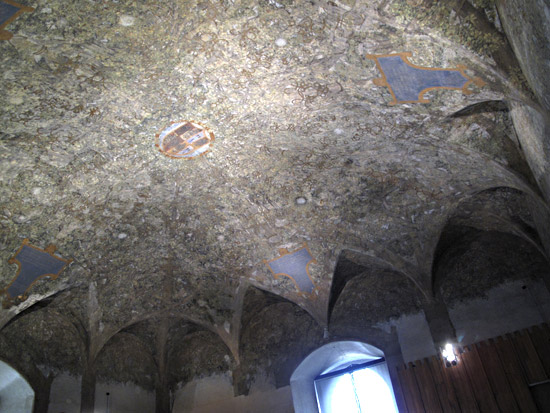
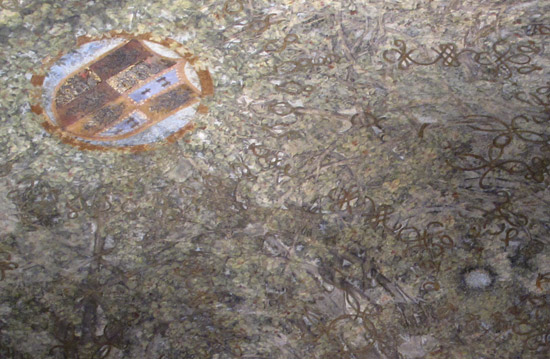
The Castello has a grand inner courtyard, with an interior moat home to dozens of cats! The museum sections are housed in the building ring around the courtyard.
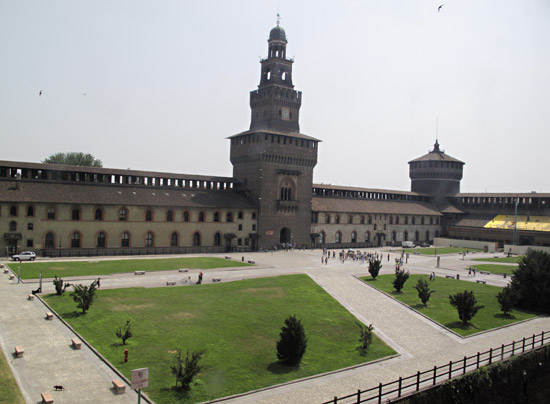
The Castello Sforzesco is a hub and a landmark for the city, stalwart and visible from a distance. One can make the short, straight walk from Castello to Duomo.
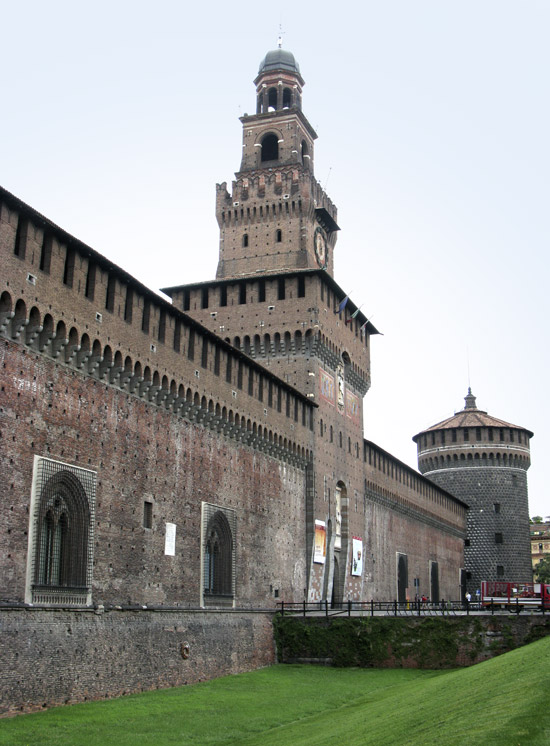
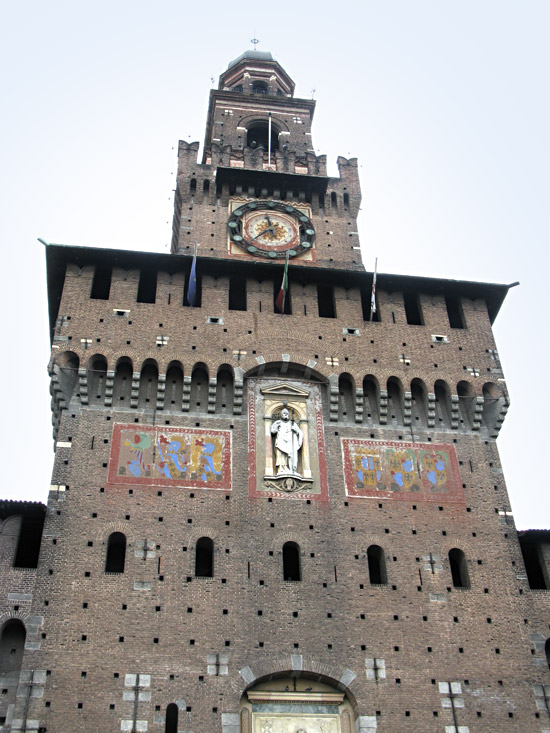
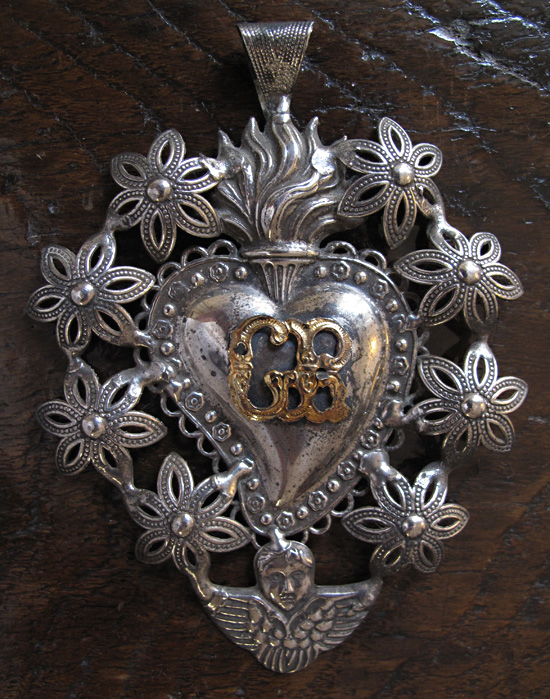
by Maureen | Jul 1, 2010 | Church, Featured Articles, Graphics, Incredible Locations, Journal, Photo of the Day, Photos
Two years ago, in exploring one church after another, I noticed cathedral walls laden with silver framed medallions bearing the letters “GR”. Some were tied with a pink or a blue ribbon. There may have been 50 in some churches, or hundreds in others.
Here’s a wall in the Duomo of Sienna (from 2008).
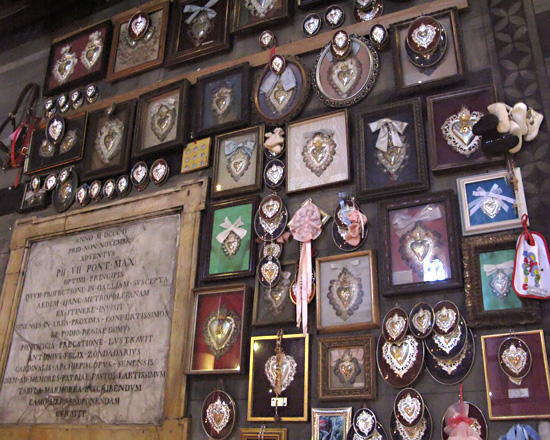
With an interest in symbols and icons, silverwork and folk art, I was intrigued. What were these? What meaning did they hold to those that posted them?
In Firenze, I went into a store selling Catholic statues, vestments, rosaries and other religious items and talked to one of the nuns working there. She explained “Per Grazia Ricevuta” – “For Grace Received” – this physical symbol of gratitude. The medallions are placed in the cathedrals at the birth of a child, the healing of an illness or injury, or other instances of great grace. (I bought one for my brother to acknowledge him, his wife and 5 kids.)
Two years later, now back in Italy, I continue to see the Grazia Ricevuta medallion. It moves me that the Italians have this tangible symbol for their gratitude . (I rack my brain trying to think of an American corollary.)
– – –
I feel such deep gratitude for the opportunity to be here. I have the means and the fortitude to have come for a year even in the midst of global economic crisis. I have experienced no mishap, illness or calamity. I have remained safe both when traveling alone and riding my bike amidst crazy, Milanese traffic. My family, friends and clients back home have been supportive and steady. New friendships and chance meetings here have kept me from loneliness and given me the highlights of my time. I have seen things that have filled my head with images to last my lifetime. THIS has been a great grace received and I am genuinely humbled by the gift.
– – –
The Grazia Ricevuta has become increasingly touching to me as my time passes here in Milano. I purchased another framed medallion to hang in my home when I return. And I just purchased one (below) from the antique market which I will wear on occasion. When you see it, you will know its meaning to me.

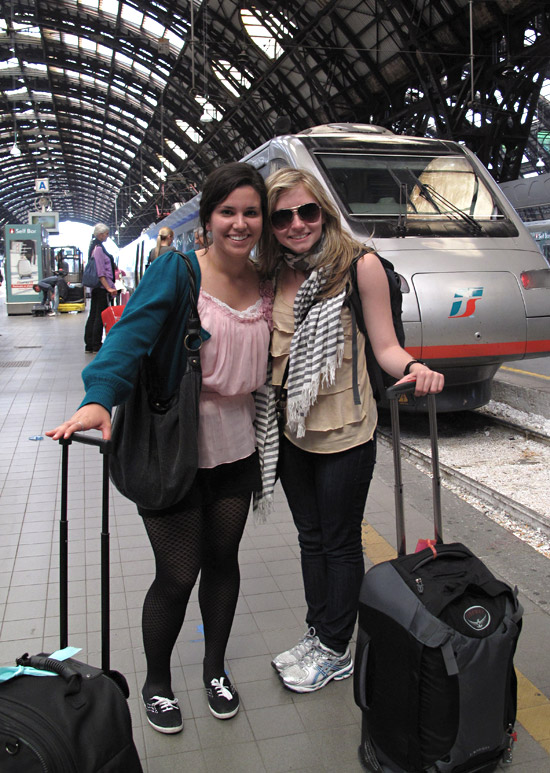
by Maureen | Jun 22, 2010 | Canals, Cheese, Discoveries, Featured Articles, Food!, Journal, Meals, People, Photos
The excitement of a college-time trek through Europe! Hannah & Zibby started together on June 8, in Newcastle Under Lyme. They went on to Amsterdam and Berlin, took a wrong train into Switzerland, and arrived in Milano yesterday. They’ll go on to Venezia, Firenze, Roma, then Athens and Santorini. A time to discover themselves and the world.
There’s always the charge of newness when arriving at a train station in a new, as-yet-unvisited city.

Following their afternoon arrival, we took off on both subway and foot for a whirlwind tour of the city. We wasted no time and stopped at the Spezia Milano Pasticceria, suitcases still in hand, to buy a tray full of the best pastries in the city.
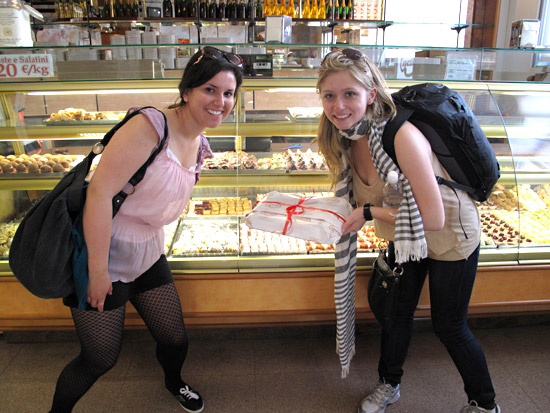
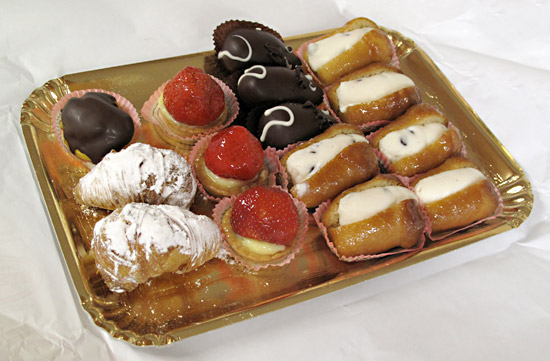
Trying a “BaBA” was a must for these girls and their yen for sweets. These little sponge-cake gems are SATURATED with rum, and filled with a sweet ricotta cheese with chocolate bits. The first bite sends a stream of rum down the arm and leaves a puddle of the alcoholic syrup in the little decorative paper cup. Tip the cup to sip every drop.
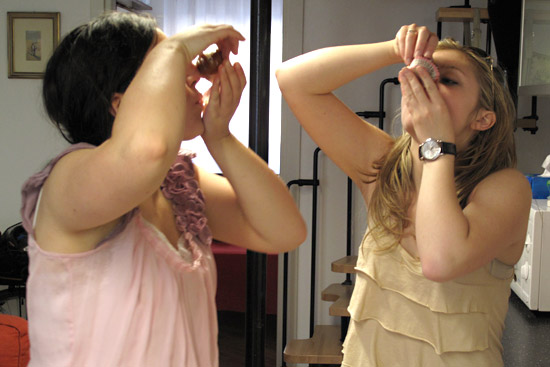
The girls freshened up after their overnight train trip, then we headed for the subway and back to the center of town: the Duomo. We studied the gargoyles, doors, and gory statues all over the church’s exterior. In addition to the pious saints and cherubs, there are pensive philosophers, ominous monsters, and poor unfortunates in all states of torture, beheading and disembowelment. We remarked on the many different artistic styles.
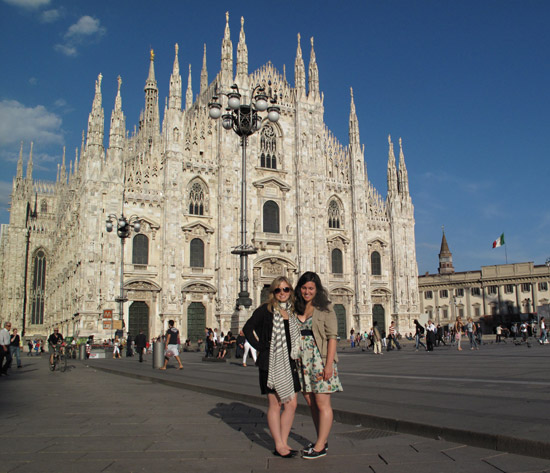
Of course we walked through the grandeur of the Galleria, a must-see for any visitor.
When out in front of the Palazzo Reale – the Royal Palace-turned-art-museum – we had a lesson in paving patterns, learning that, though attractive, the round, embedded pebbles were actually not very comfortable to walk on. That’s the reason for the inlay of broad flat stones.
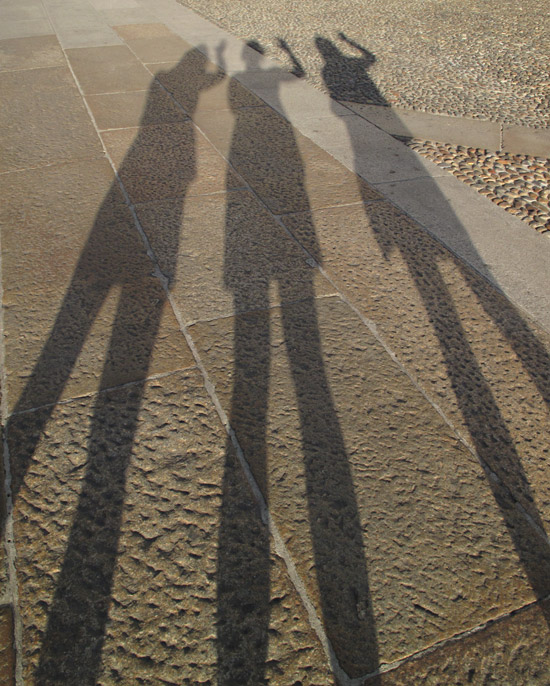
Throughout Italy there are water fountains in the major cities that provide potable water from natural, underground sources (or so I’ve been told). Locals and tourists alike refill water bottles, or take sips on a hot day. One man knew the trick of blocking the water flow coming out the bottom of the spigot, which then diverted the flow out through a small upper hole, creating a drinking fountain arc of fresh water. Hannah just had to test the waters.
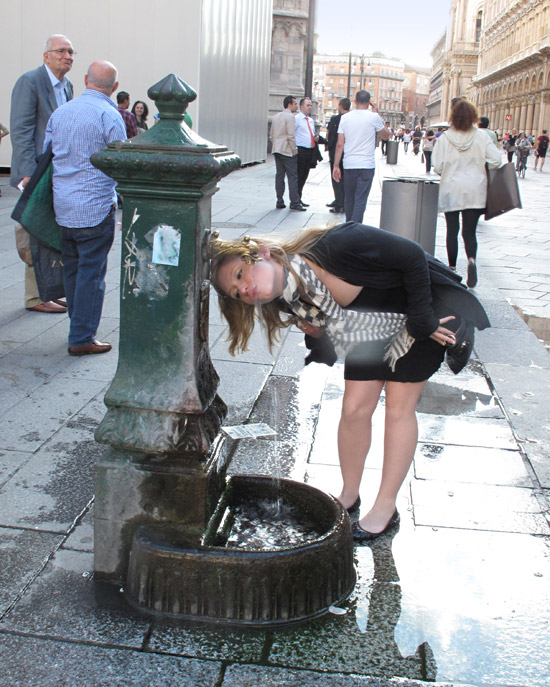
The tired travelers were getting hungry, so we descended into the subway maze, caught the red line, then transferred to the green line. We got off at Porta Genova to stroll through the Navigli – canal – district, the hip, energetic, trendy, scenic zone of antique fairs, flower markets and exhibiting painters. We had come for aperitivi, Milano’s traditional all-you-can-eat buffet for the price of one drink, usually 7-9 euro. We picked the restaurant on a floating green barge docked at the junction of the Naviglio Grande and the Naviglio Pavese. In addition to the usual carbs of pasta and pizza squares, they offer roasted peppers, eggplant and zucchini, balls of fresh mozzarella, and an amazing bruschetta of Italy’s summer-ripe tomatoes. A very nice Montepulciano and a strawberry mojito are what we selected for making our toast to being in Milano together.
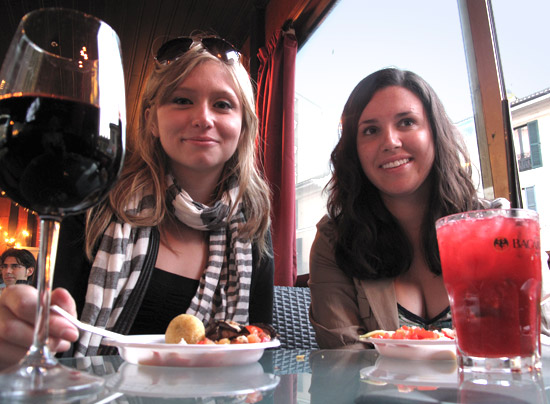
The collective sweet tooth reigned and our meal would not have been complete without a further stroll along the canal and a stop to buy gelato. Hannah and Zibby learned a lesson about design and merchandising. This particular gelateria has very nice signage and interior display… and a line of people out the door waiting to get in. A gelateria 3 doors down is NOT visually impressive and the place was empty.
I was proud of Hannah for ordering her gelato IN ITALIAN! “Vorrei stracciatella.” “I would like stracciatella” (A vanilla gelato with little bits of chocolate chip throughout).
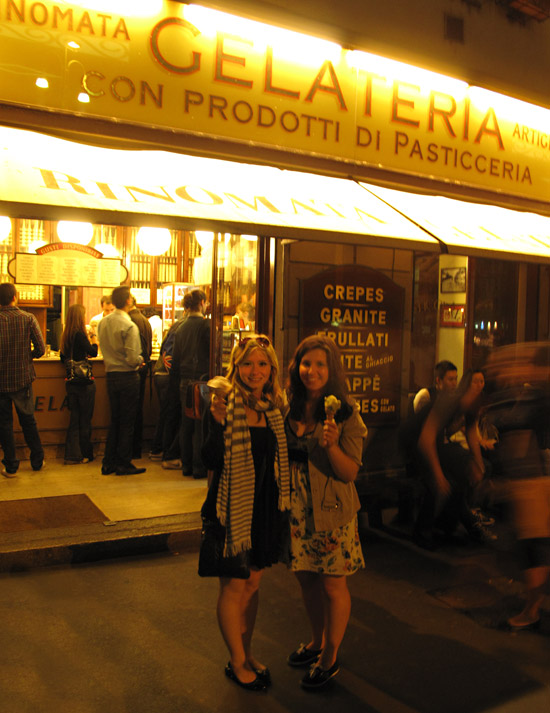
By 11 o’clock on a lovely, warm evening, we were walking along the smaller of the two canals amidst umbrellas, street musicians and candle light. We took a detour for a late night showing of some of Milano’s best graffiti, then headed home for a skype session with folks back home.
Hannah and Zibby were gracious, curious and great company during their personal tour of my Milanese haunts. They enjoyed seeing and hearing about some of the particular details of a “local”.
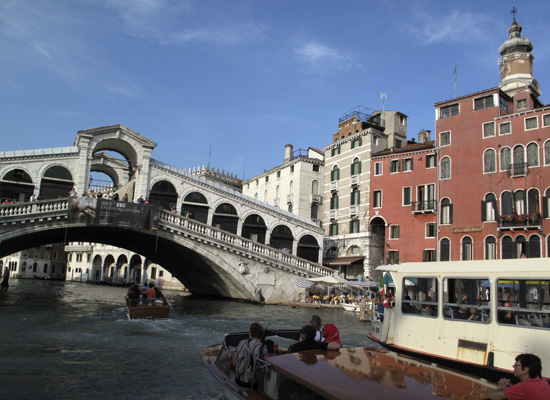
by Maureen | Jun 14, 2010 | Canals, Church, Graphics, Incredible Locations, Introspection, Journal, Photos, Venezia - Venice
Venezia – Venice – will always remain, for me, one of the great and marvel-filled cities of the world.
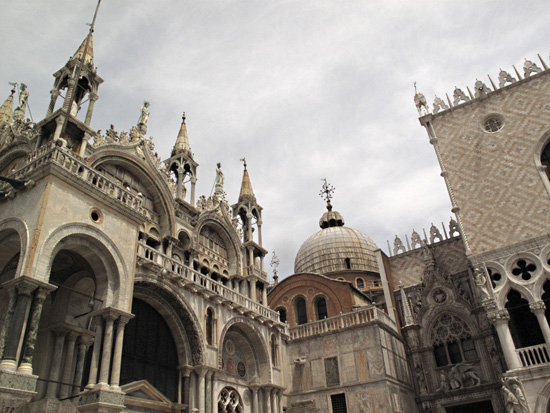
.
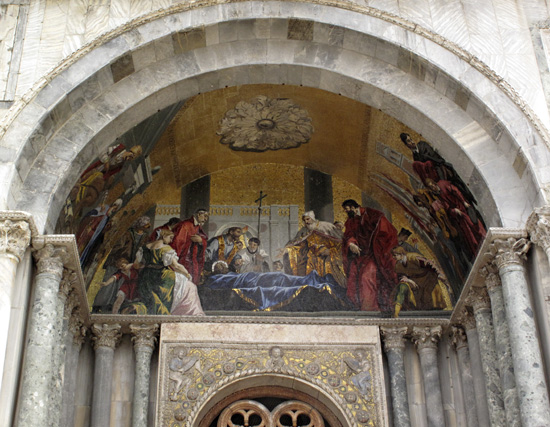
.
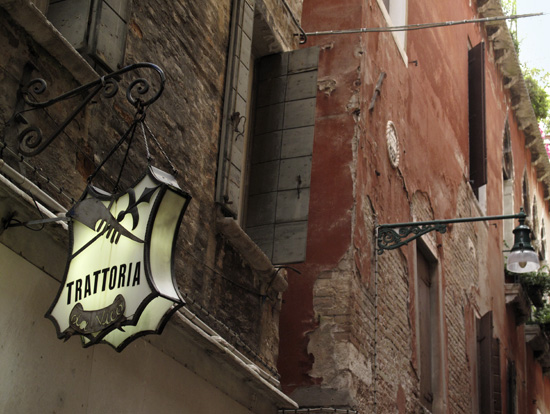
.
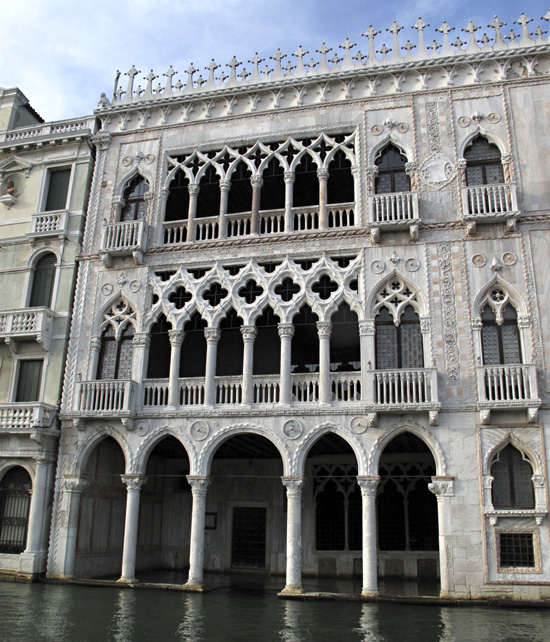
.
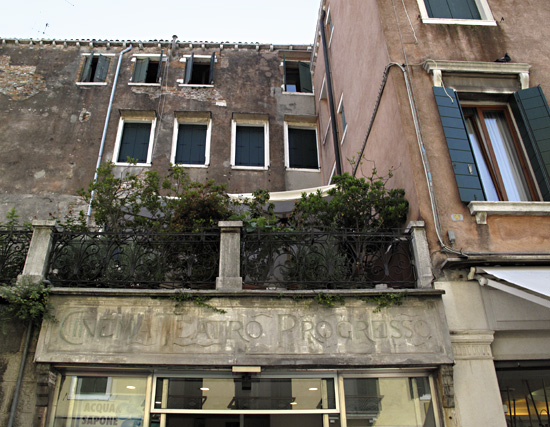
.
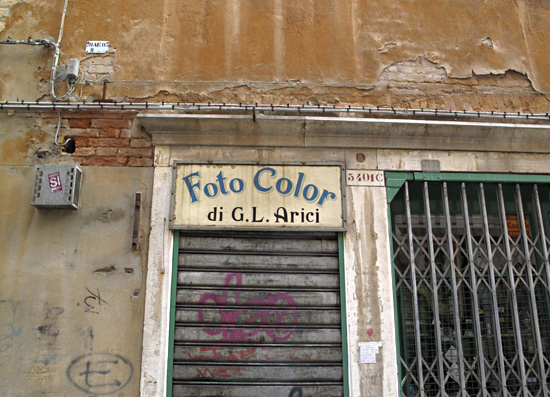
.
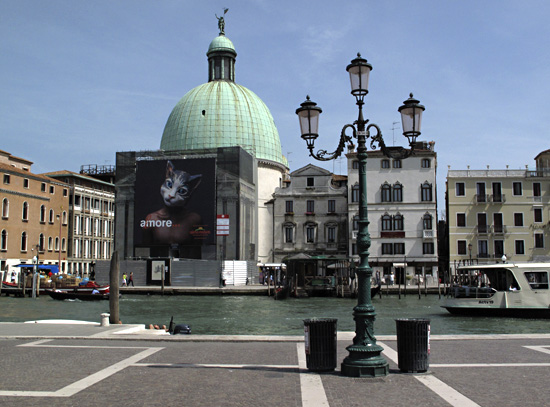
.
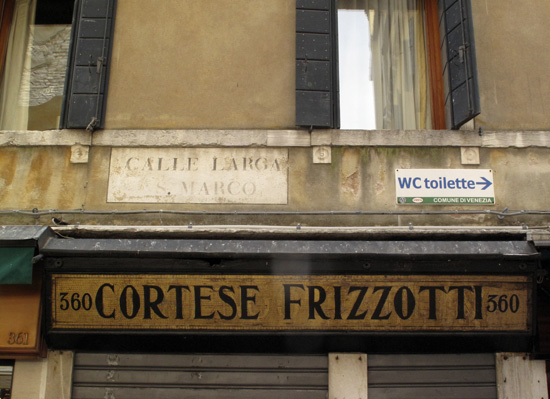
.
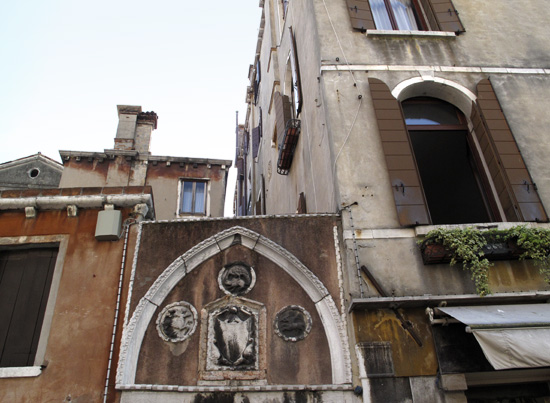
.
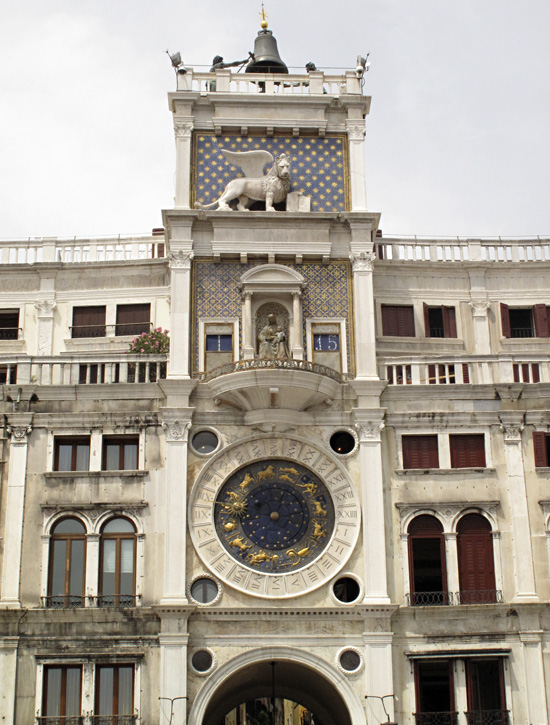
.
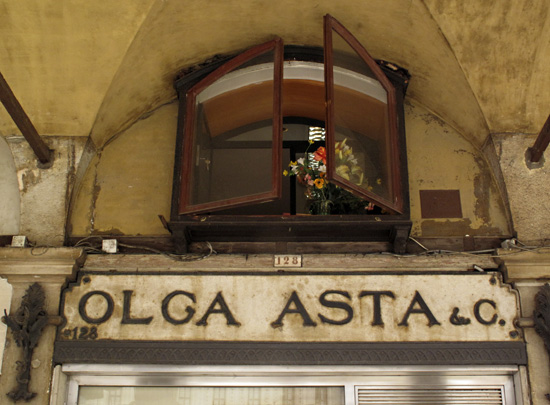
.
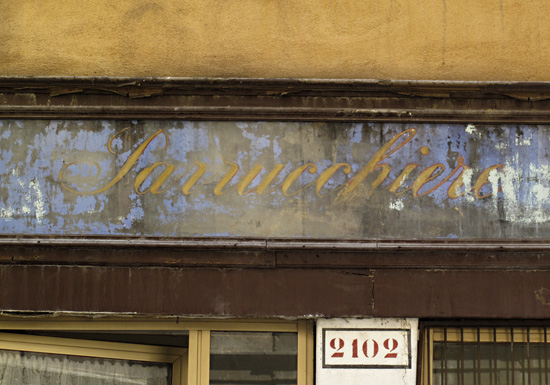
.
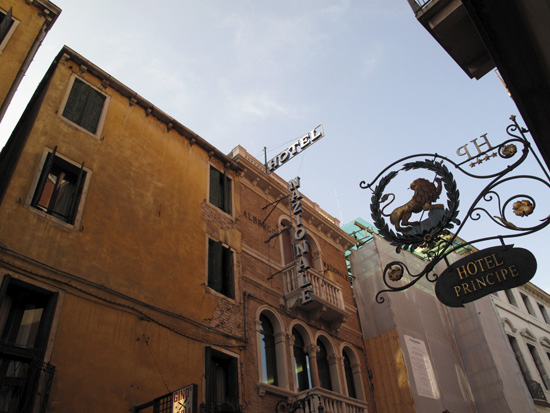
.

.
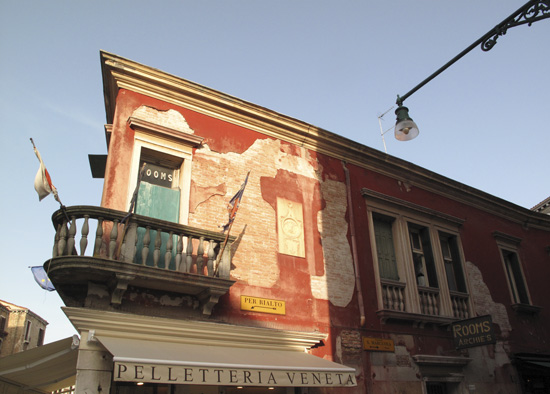
.
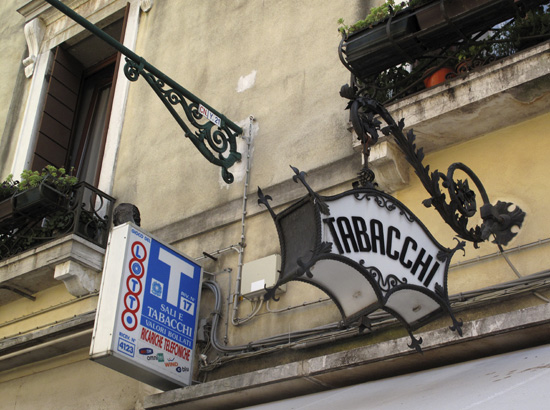
.
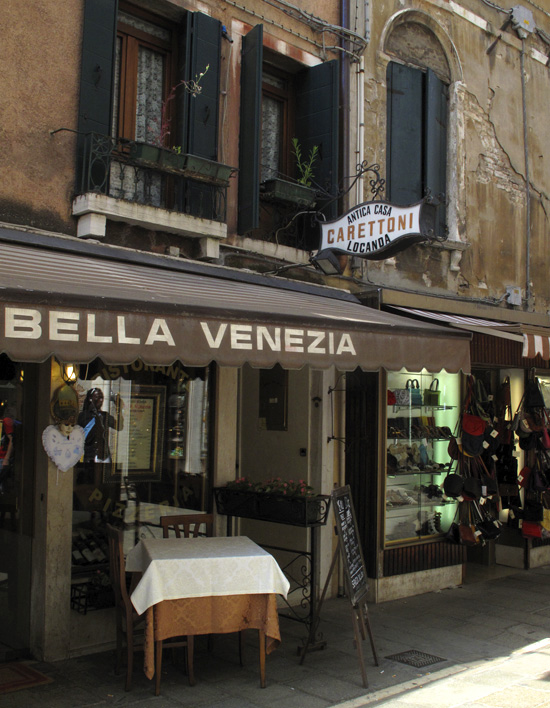
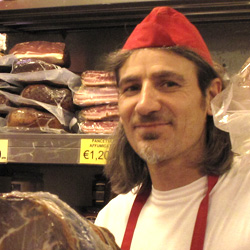
by Maureen | Jun 13, 2010 | Bologna, Church, Food!, Graphics, Incredible Locations, Introspection, Journal, Photos, Quips, Shopping & Markets
The visual lushness in Italy thrills me. Architectural details. Signage. The artistic sense. And the character of the people. As an artist, I am fed deeply as I explore this country. I expect that the inspiration and imagery I’ve found here will propel me for years to come.
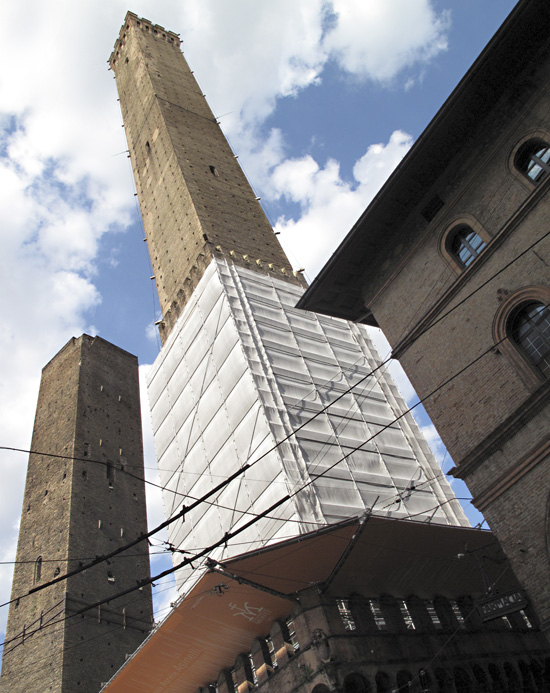
.
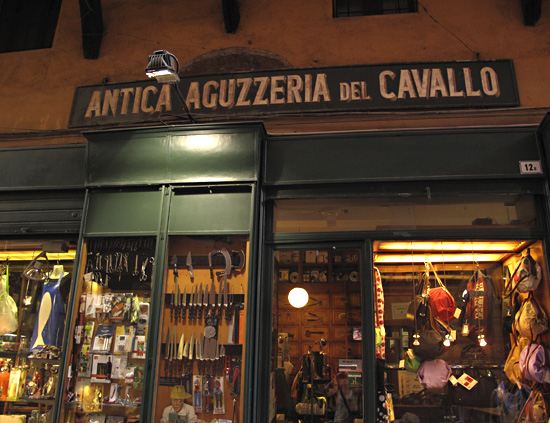
.
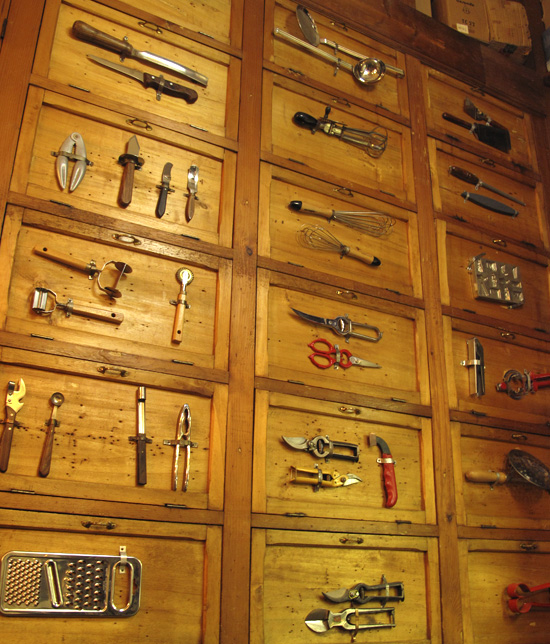
.
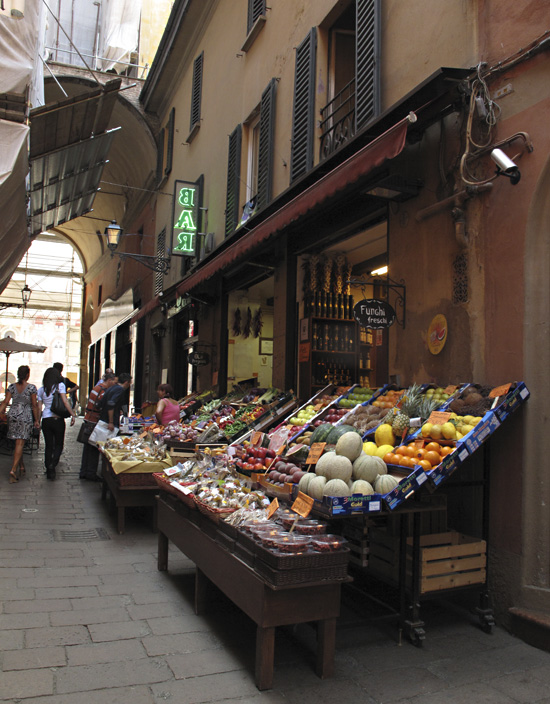
.
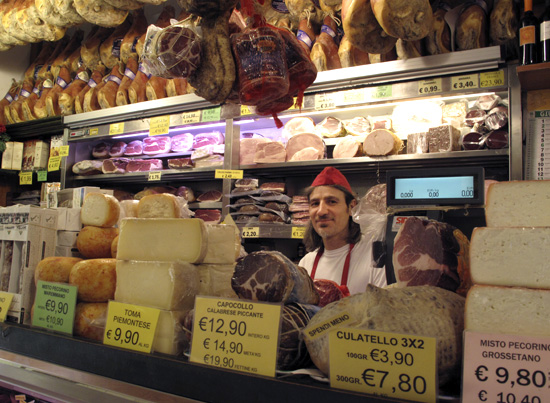
.
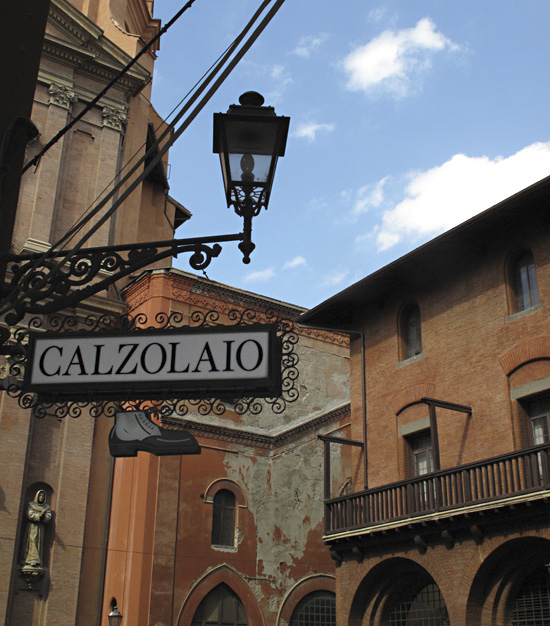
.
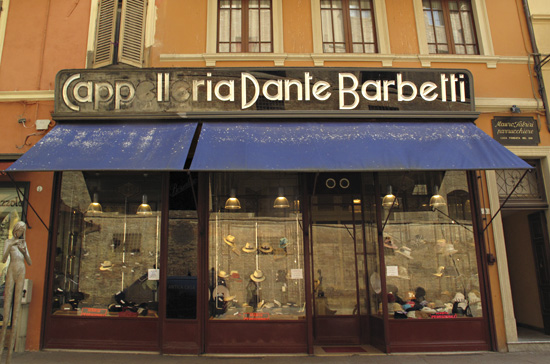
.
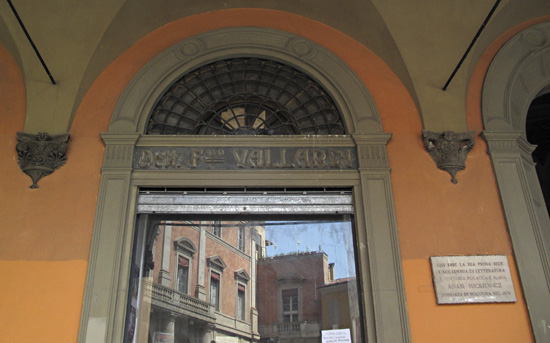
.
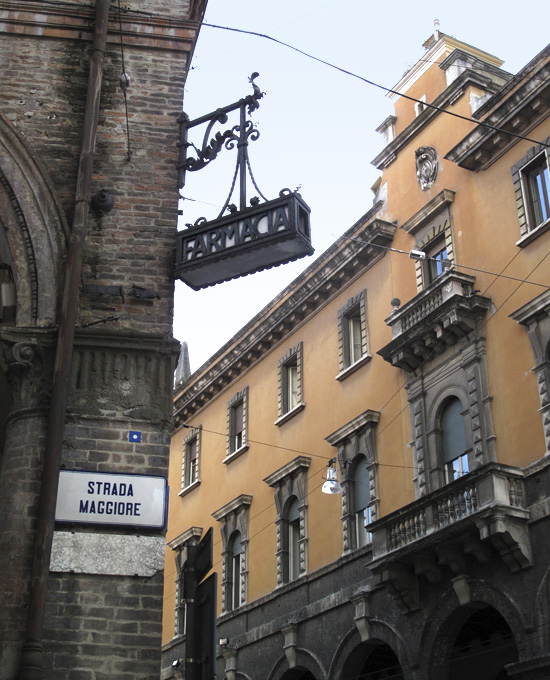
.
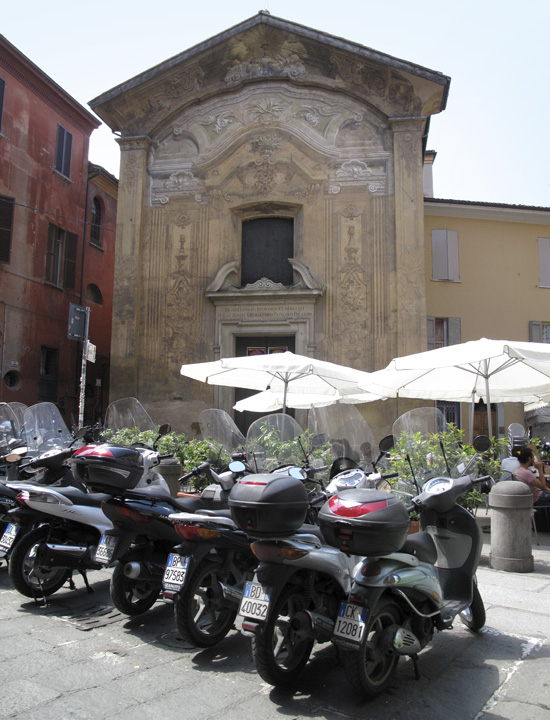
.
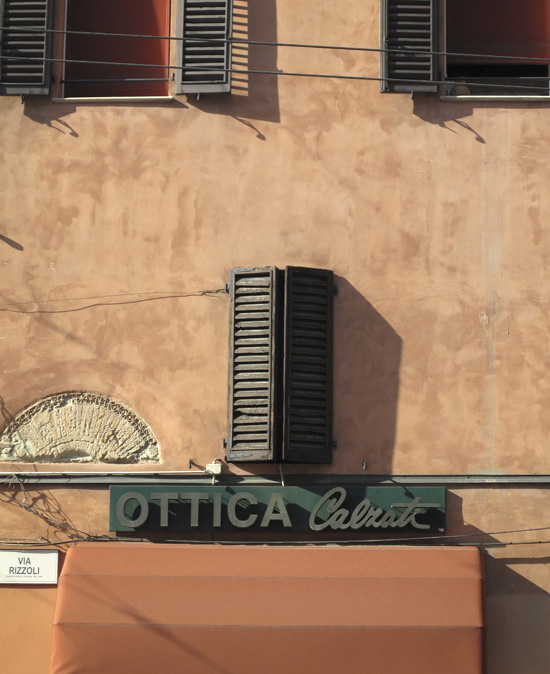
.
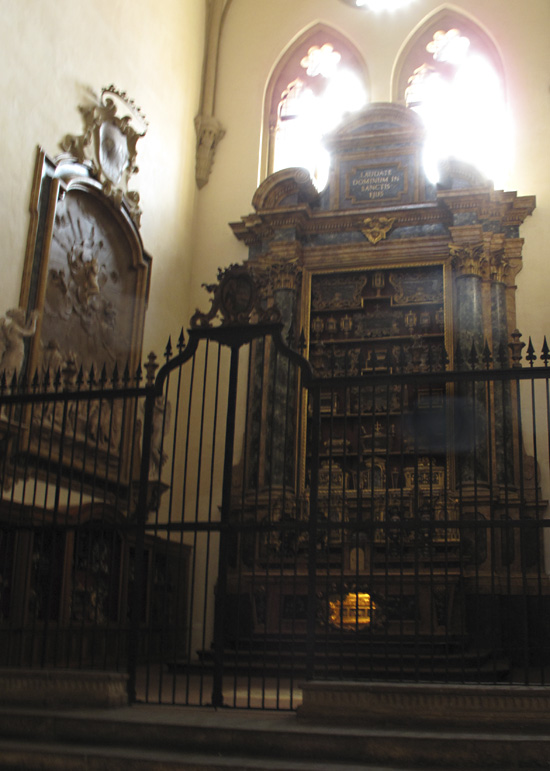
.
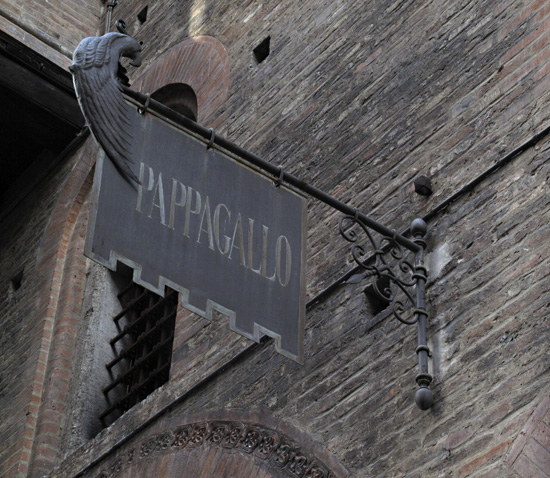
.
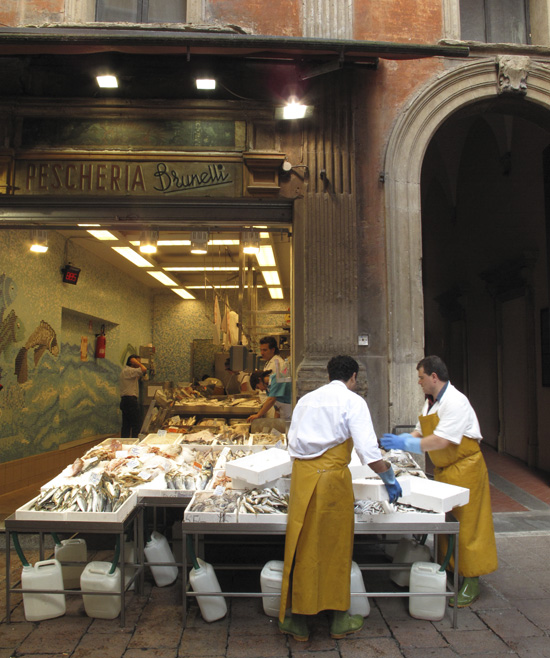
.
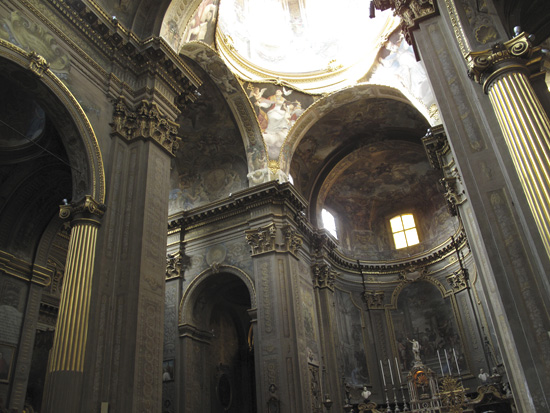
.
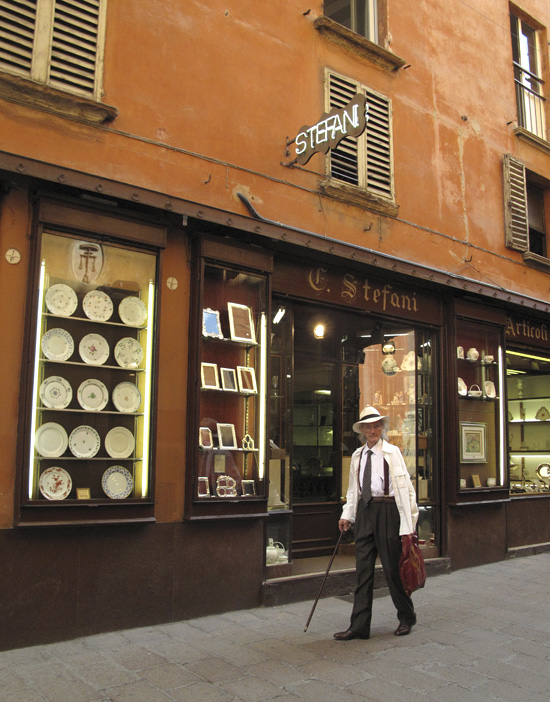
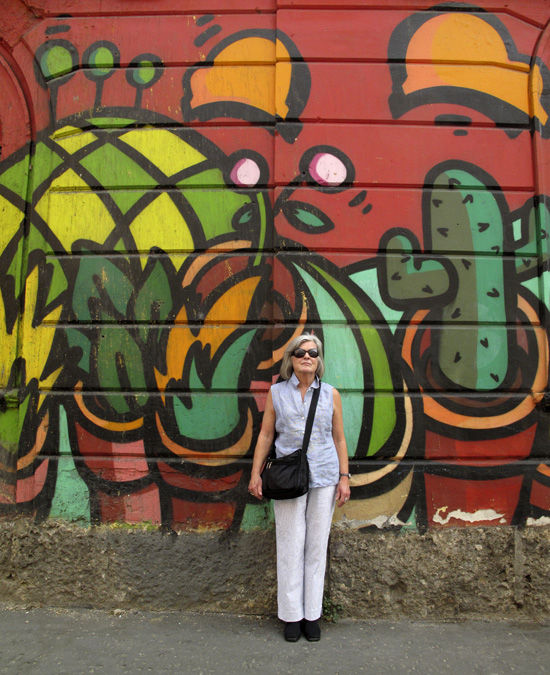
by Maureen | Jun 13, 2010 | Apartment, Church, Food!, Journal, Meals, People, Photos, Shopping & Markets
Sally flew over from Seattle a week ago to share the sights of Milano, the wonderful food treats available and the simple efficiency of my apartment. She came off the plane and out of customs beaming.
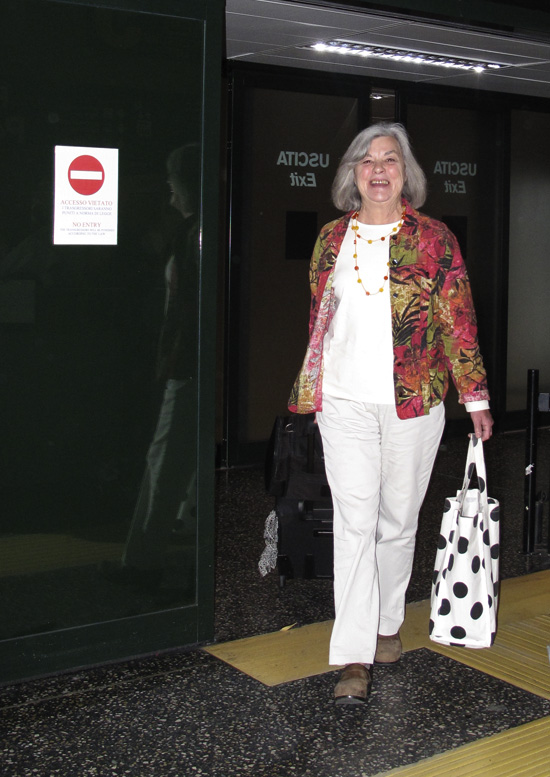
We took the Malpensa Express train from the airport into town, and got out at the Cadorna station. We walked out in front so she could see the “Needle, Thread and Knot” sculpture by Claes Oldenburg and Coosje van Bruggen. The knot is across the street, as if the needle had taken a stitch under the roadway.
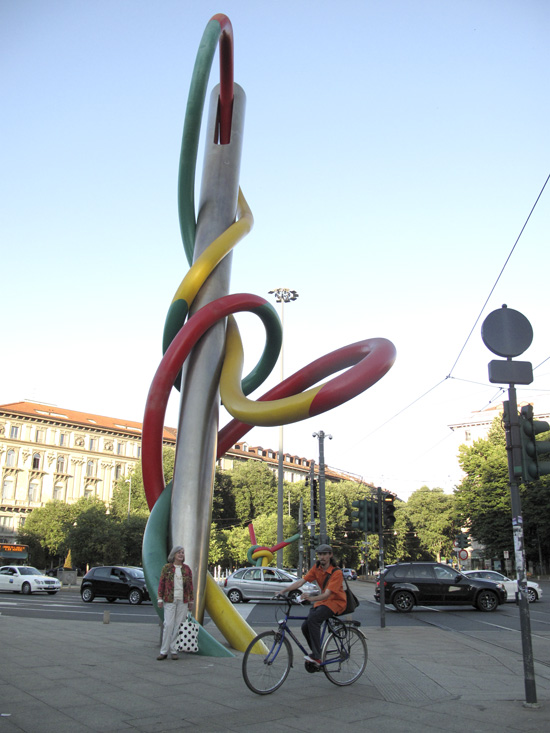
Our first breakfast was a caprese salad with mozzarella from the farm, lovely ripe tomatos, just-picked basil, served on a bed of songino – watercress – and some freshly sliced proscuitto. Not a bad welcome to Milano!
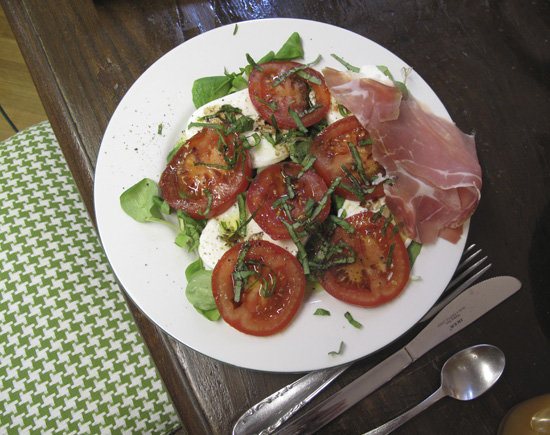
On Sally’s first day in Milano, we walked over to the Saturday street market where the vendors were selling fruit, vegetables, cheese, meat, fish, clothes and a few household goods. We stocked our kitchen with fresh basil, red pepper, asparagus, spicy salame with fennel, fresh eggs, cherry tomatoes, blood oranges, pickled onions, both “sweet” and spicy olives, burratina cheese, smoked mozzarella, dried figs from Calabria, prosciutto and bresaola.
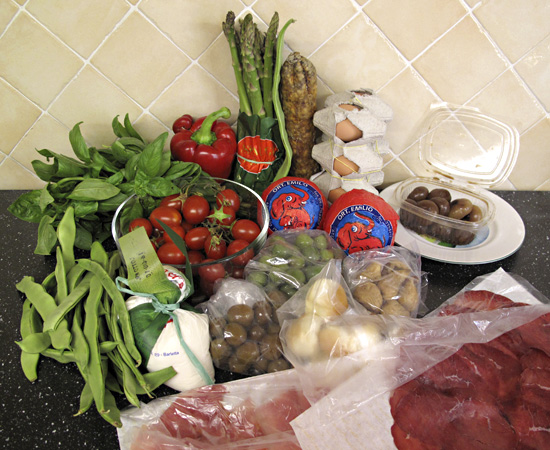
With hot weather, we opened the french doors and sat on my “shelf”, as Sally called it. Not quite big enough to be called a deck, or veranda, or lanai, it held our two chairs while we put our feet up on the railing. We chatted in the sun and greeted neighbors as they walked past to go dump their garbage in the room below us.
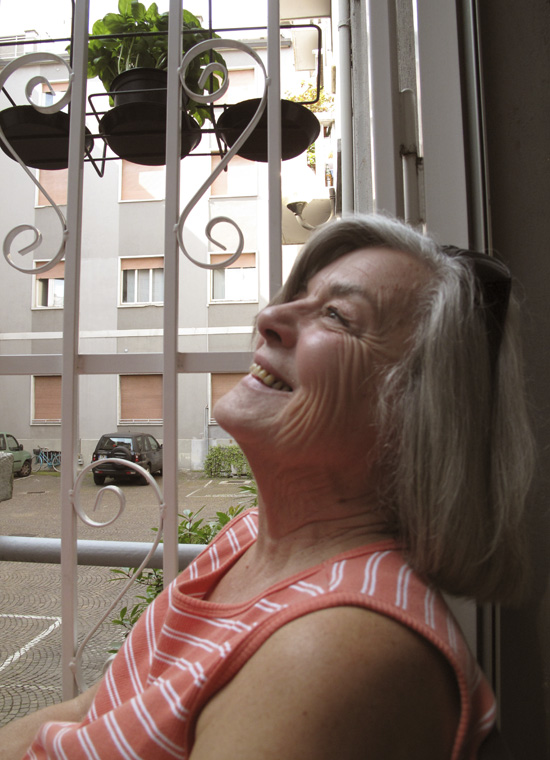
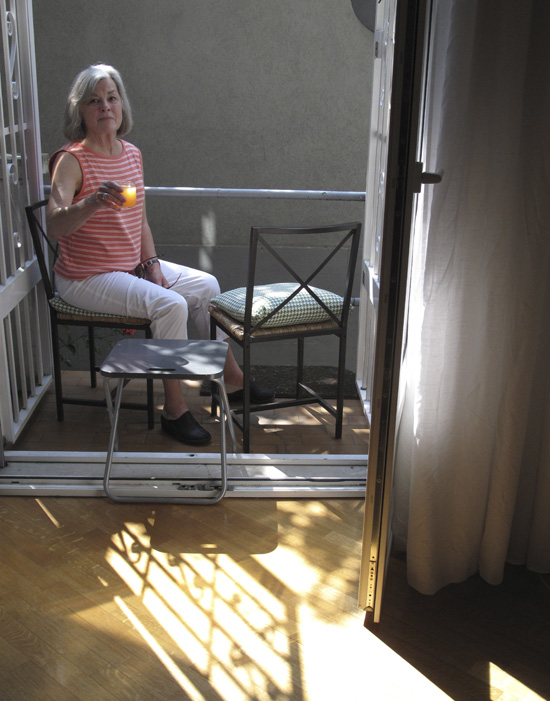
No trip to Milano would be complete without going out for aperitivi. We walked along the Naviglio Pavese Canal and stopped into one of the many restaurants that were hopping and lively on the hot, muggy night. We selected from their buffet of pasta, cheese, meats, pizza squares… and ribs (of all things). Sally’s martini was oddly sweet and not at all martini-like.
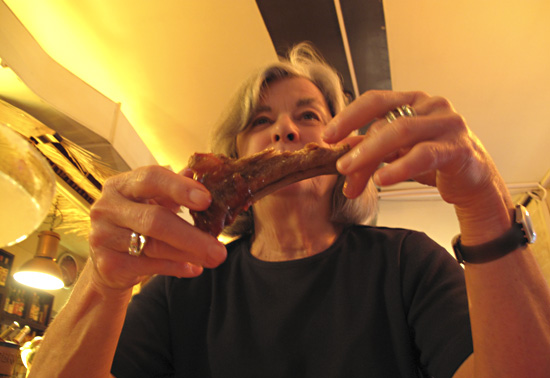
Sally enjoyed online communications, keeping in touch with family through Skype and e-mail.
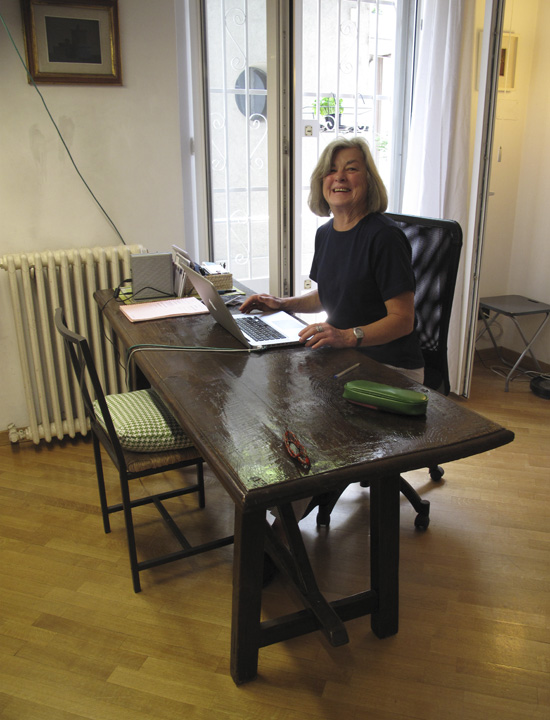
There’s a wonderful graffiti wall outside of a garden center between Corso Como and the Monumental Cemetery. What a great backdrop! This is one of my favorite photos of Sally in Milano.

We just had to take a stroll through 10 Corso Como, the city’s legendary fashion, accessories, art and design boutique. This is NOT the place to pull out your credit card, but rather just harvest ideas for garment design and construction.
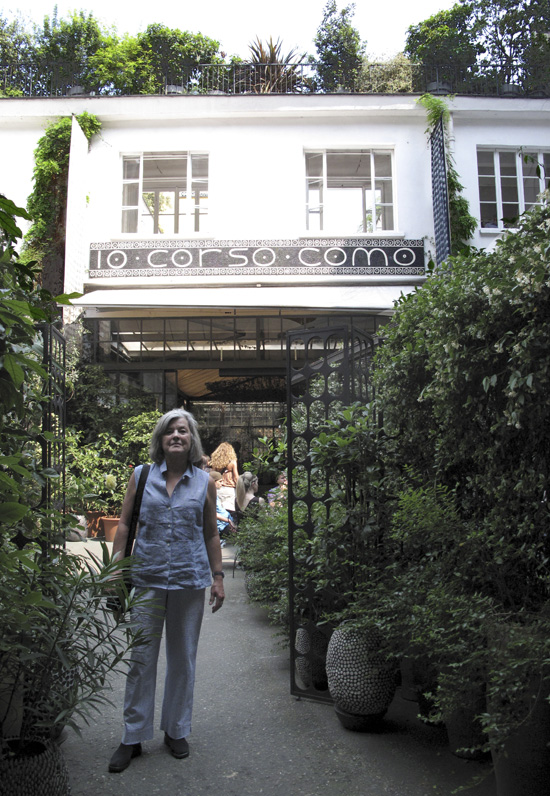
We made reservations for dinner on Saturday at Malavoglia where you ring the doorbell to get in and are greeted by bow-tie-adorned owner, Aldo, and a complementary glass of bubbly prosecco. We shared a primo of fresh pasta with black squid ink sauce. It was delicious.
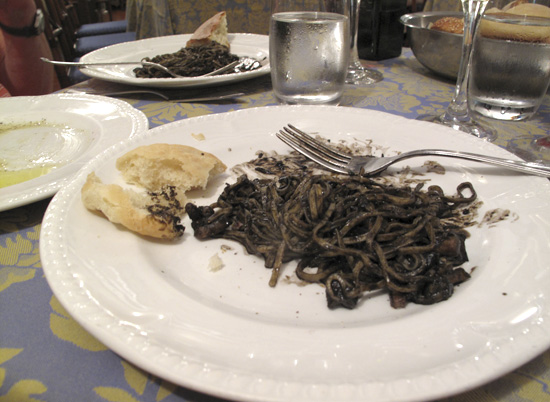
One of the highlights of Sally’s time in Milano was her visit to the Duomo. We spent time in the piazza, “the living room of the city”. We walked its circumference marveling at the variation in details and gloried at the cathedral’s interior. We topped off the tour with time on the rooftop, getting up close to the sculptures, finials and gargoyles, and looking out over the city.
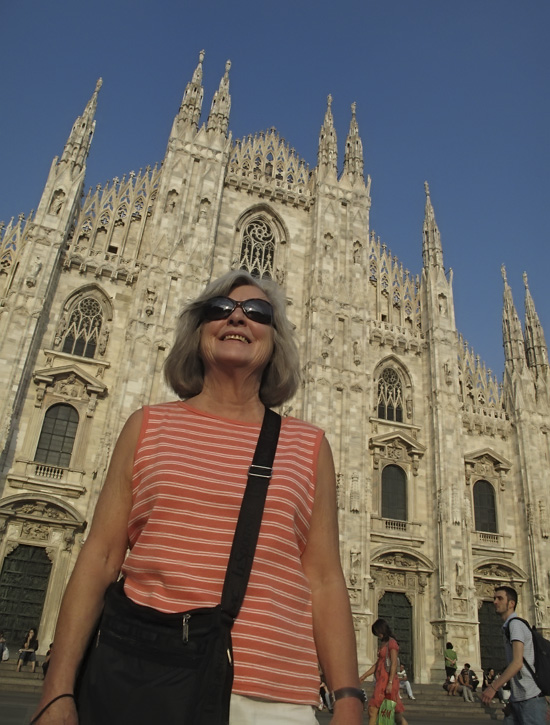
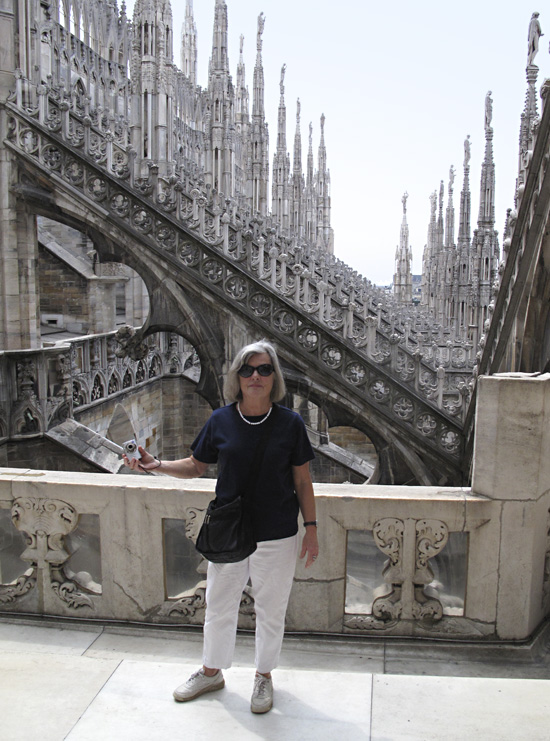
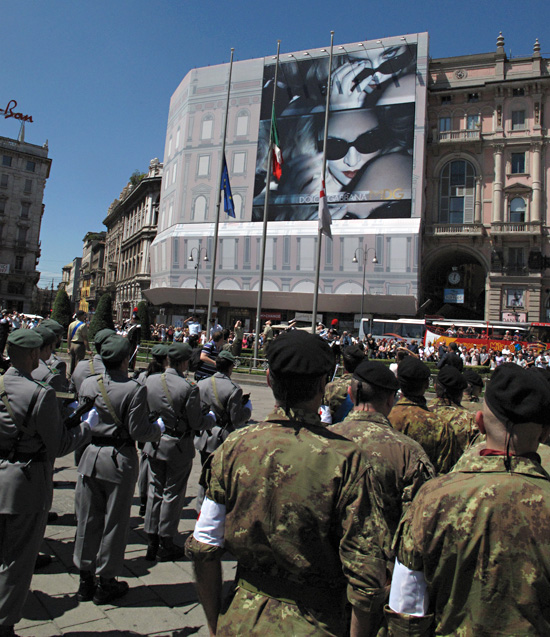
by Maureen | Jun 3, 2010 | Discoveries, Featured Articles, Introspection, Journal, People, Photo of the Day, Photos
While here in Milano for the cycle of a full year, I’ve tried to get some sense of every holiday or special occasion. I’ve attended, or found myself caught in the middle of, festivals, parades, fairs and spontaneous crowds, and each one tells me a little more about Italia and her people. Yesterday was Festa della Repubblica.(See the wikipedia entry below.) I went online to find out what the city was doing for the holiday and I found mention of the ceremony at the Piazza del Duomo.
I came up out of the subway into the piazza at a quarter ’til noon. Being little, I weasled my way toward the front of the crowd so I could see better. A military brass band was playing, and a half dozen military groups were standing in formation.
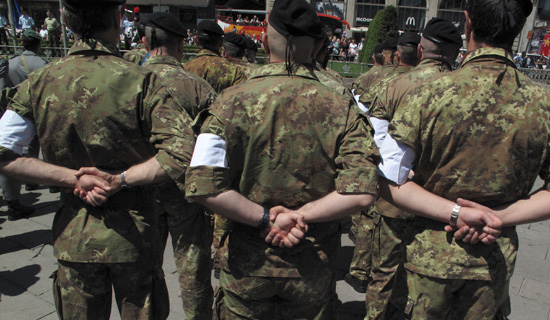
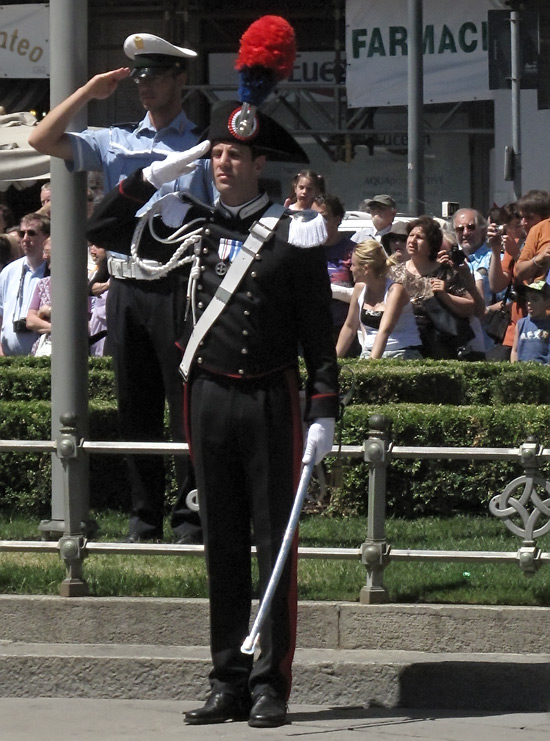
At noon, they began raising the flags of Italia, Milano and the European Union. (I was amused that the visual backdrop for the ceremony was not the Duomo, but rather a sexy sunglasses ad for Dolce & Gabbana. I’m sure D&G planned their ad placement for this precise timing!)

When the national anthem played, the crowd around me sang with passion, especially the older folks. A marching procession followed, with each of the military groups in formation. Firefighters and local police were included in the groups.
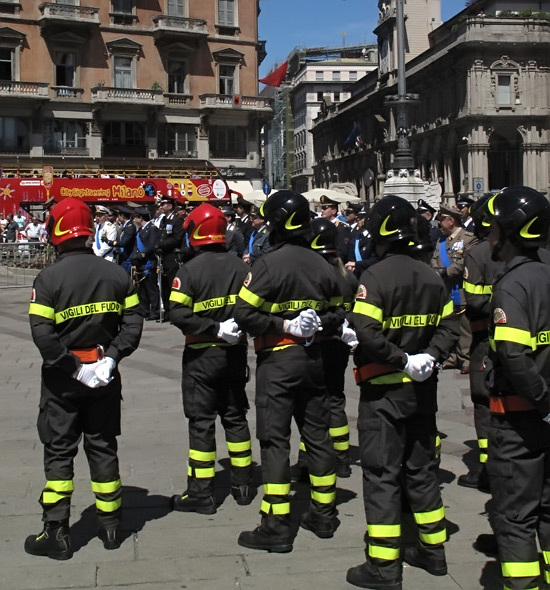
It was a short march around the corner of the piazza then down to the side of the Duomo and the courtyard in front of the Palazzo Reale. (I was surprised when I got a little choked up.)
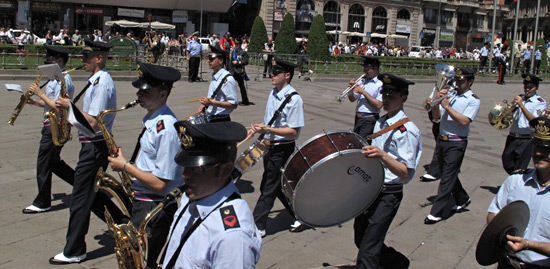
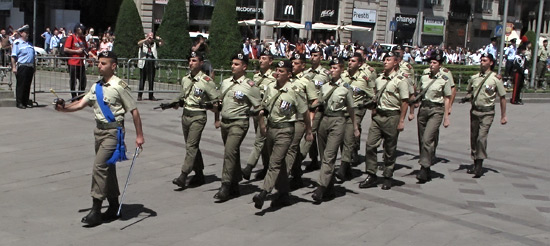
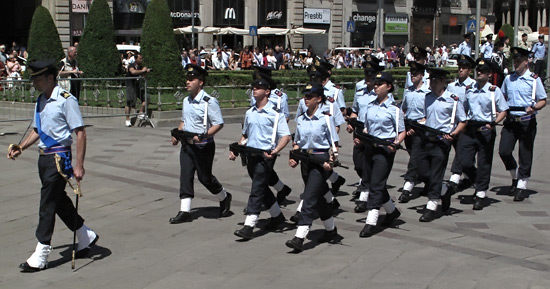
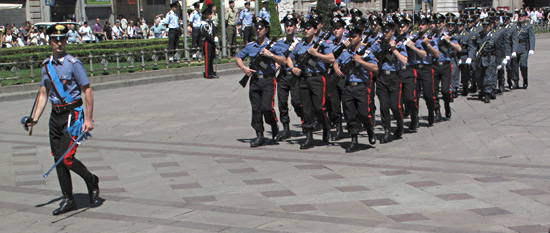
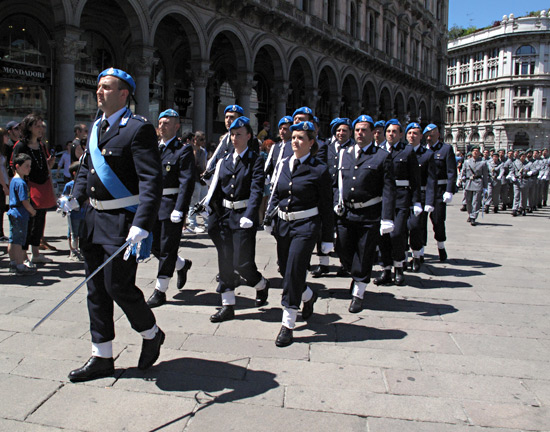
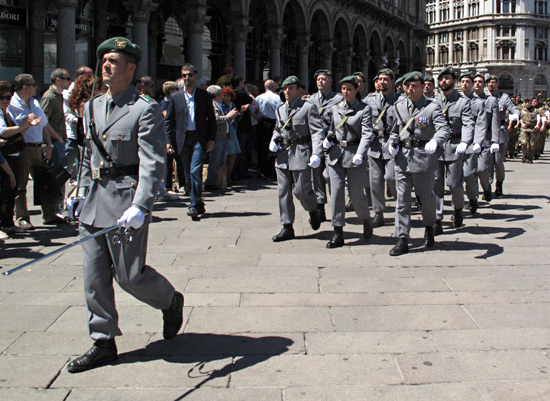
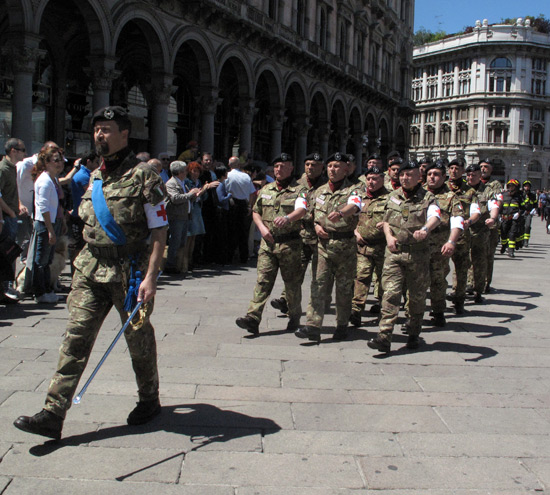
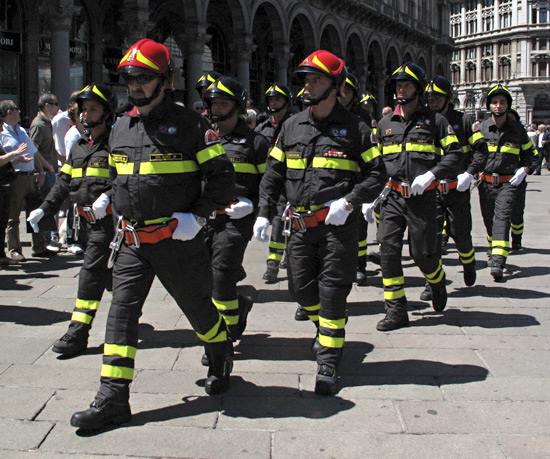
Small groups of city officials and military leaders gathered for informal portraits, then people dispersed into their midweek holiday.
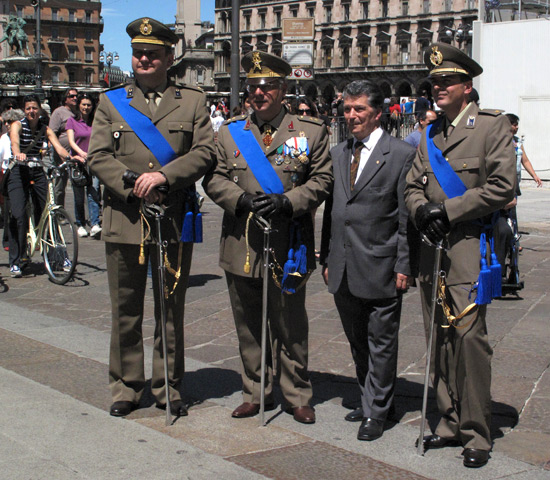
“Festa della Repubblica (literally Festival of the Republic or, in English, Republic Day) is celebrated in Italy on the second of June each year. The day commemorates the institutional referendum held by universal suffrage in 1946, in which the Italian people were called to the polls to decide on the form of government, following the Second World War and the fall of Fascism. With 12,717,923 votes for a republic and 10,719,284 for the monarchy, the male descendants of the House of Savoy were sent into exile. To commemorate it, a grand military parade is held in central Rome, presided by the President of the Republic in the role of Supreme Commander of the Armed Forces. The Prime Minister and other authorities attend too.”
An article (in Italian) on Milano’s web site:
“Festa Repubblica per recuperare i valori del Paese”
“Festa Repubblica to recover the values of the Country.”

























































































































